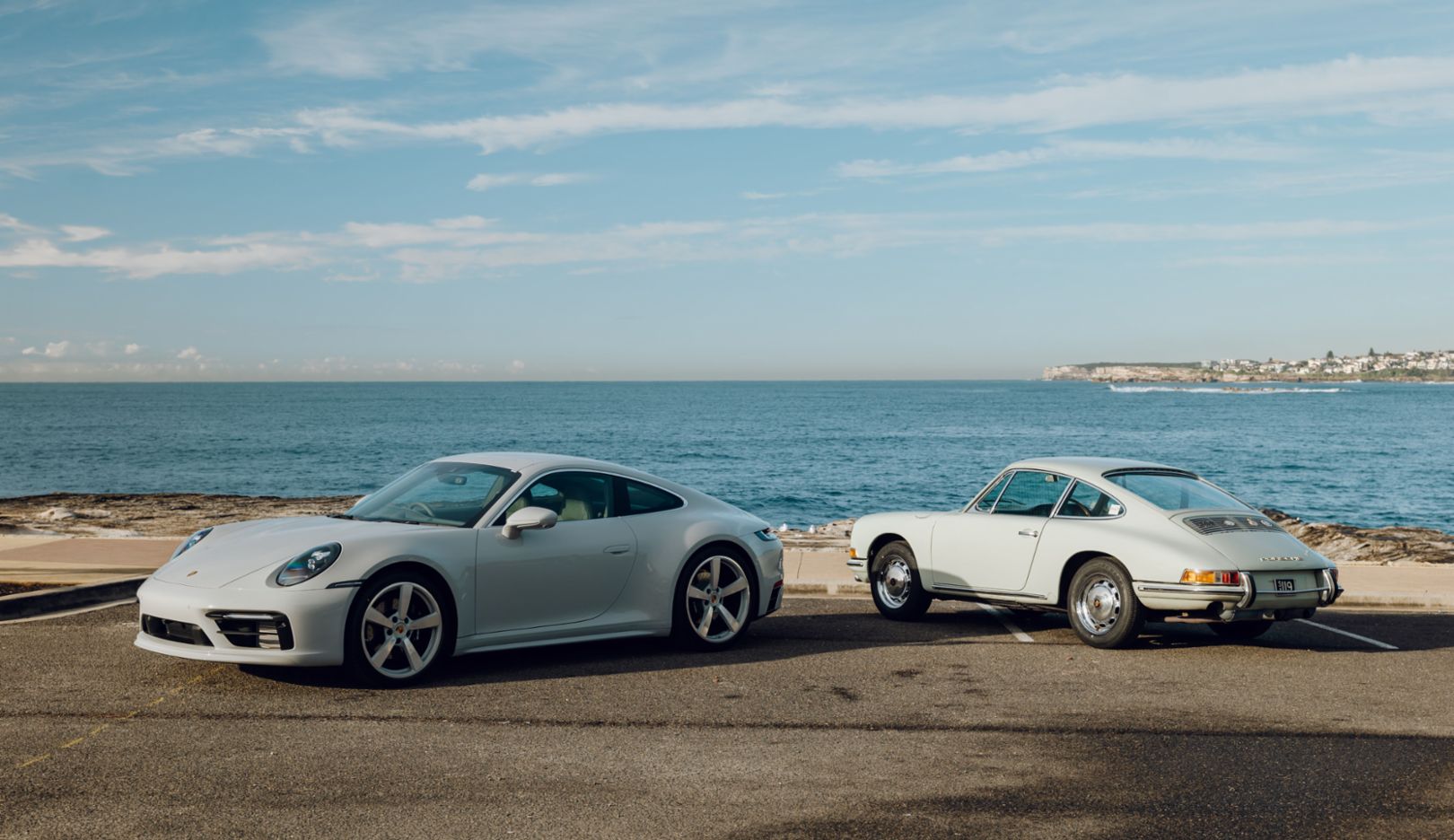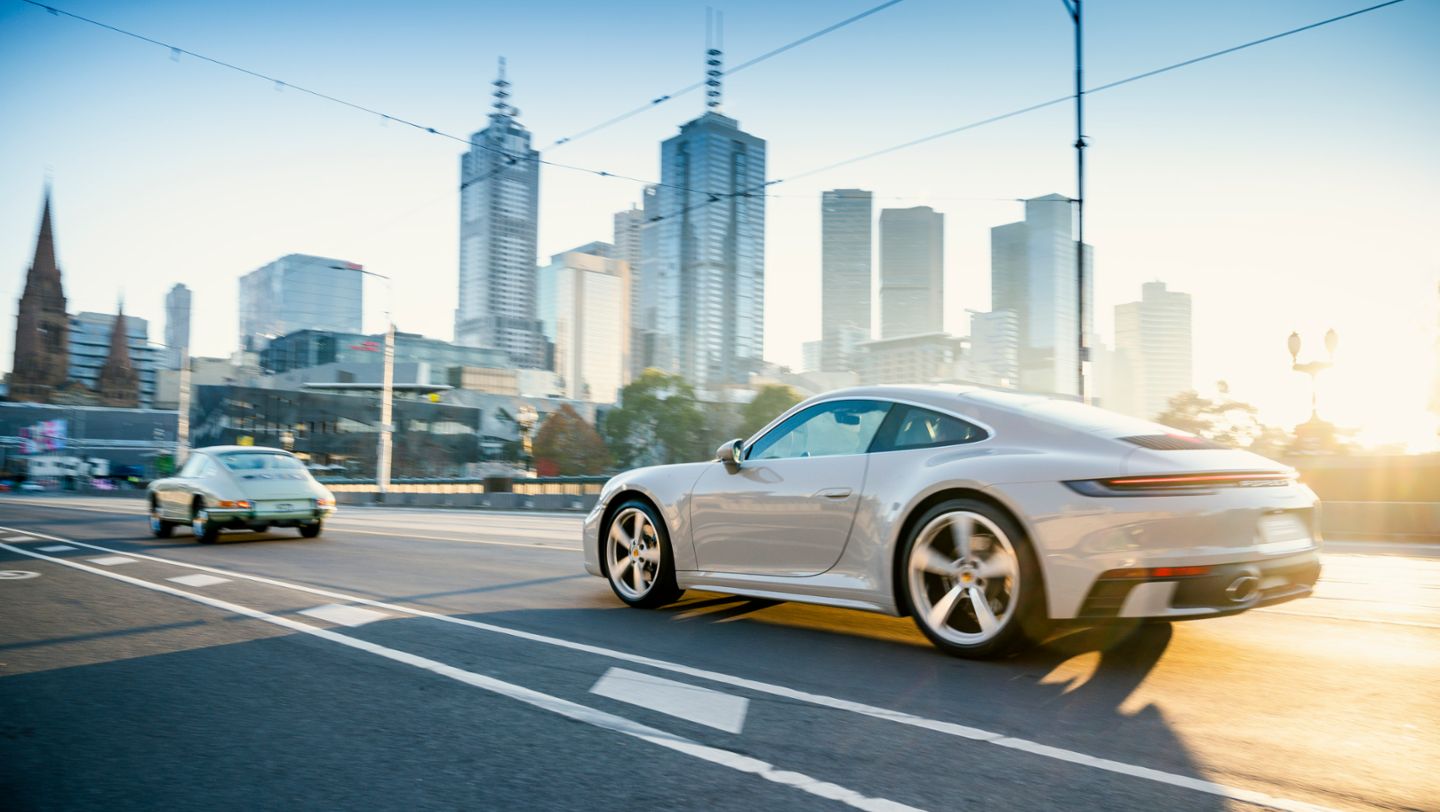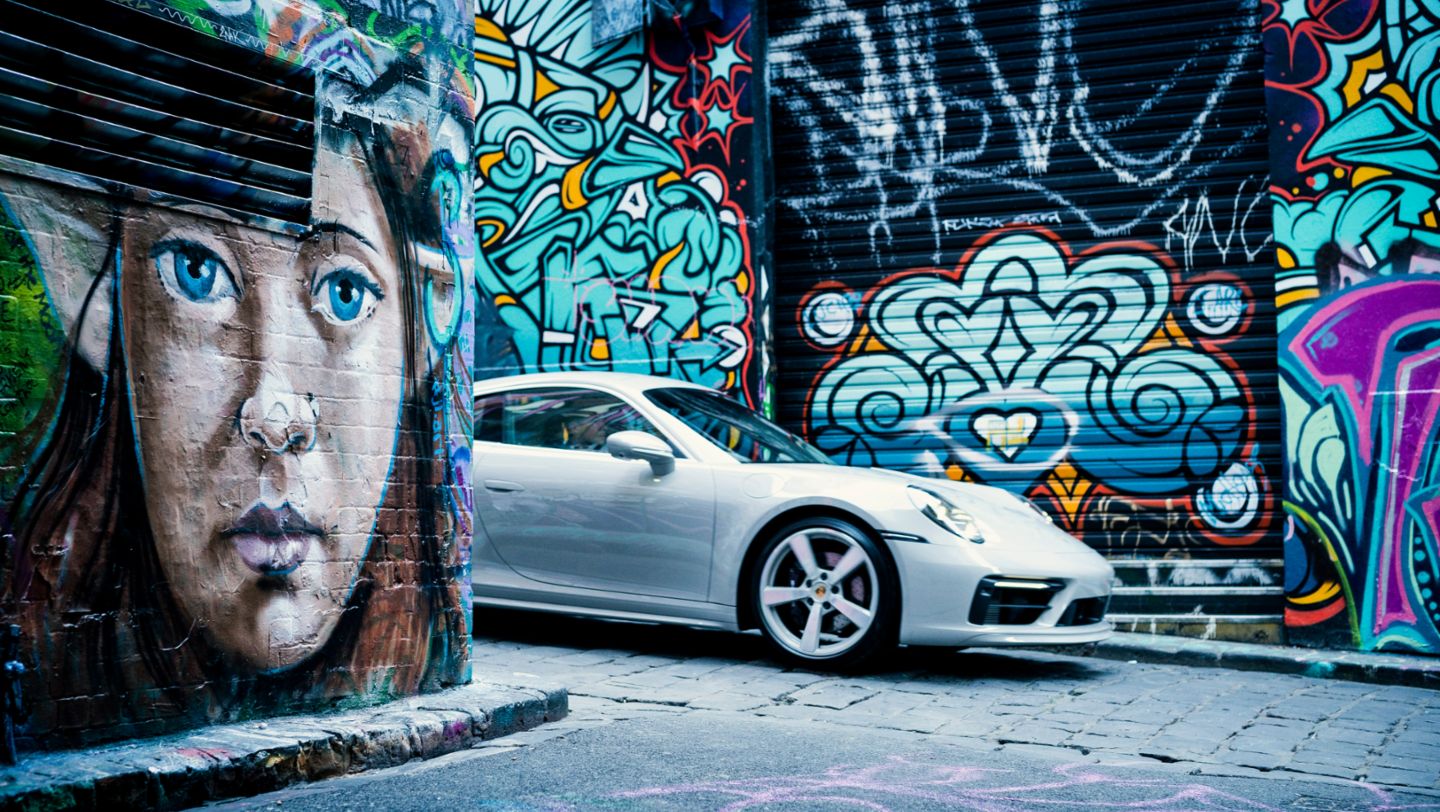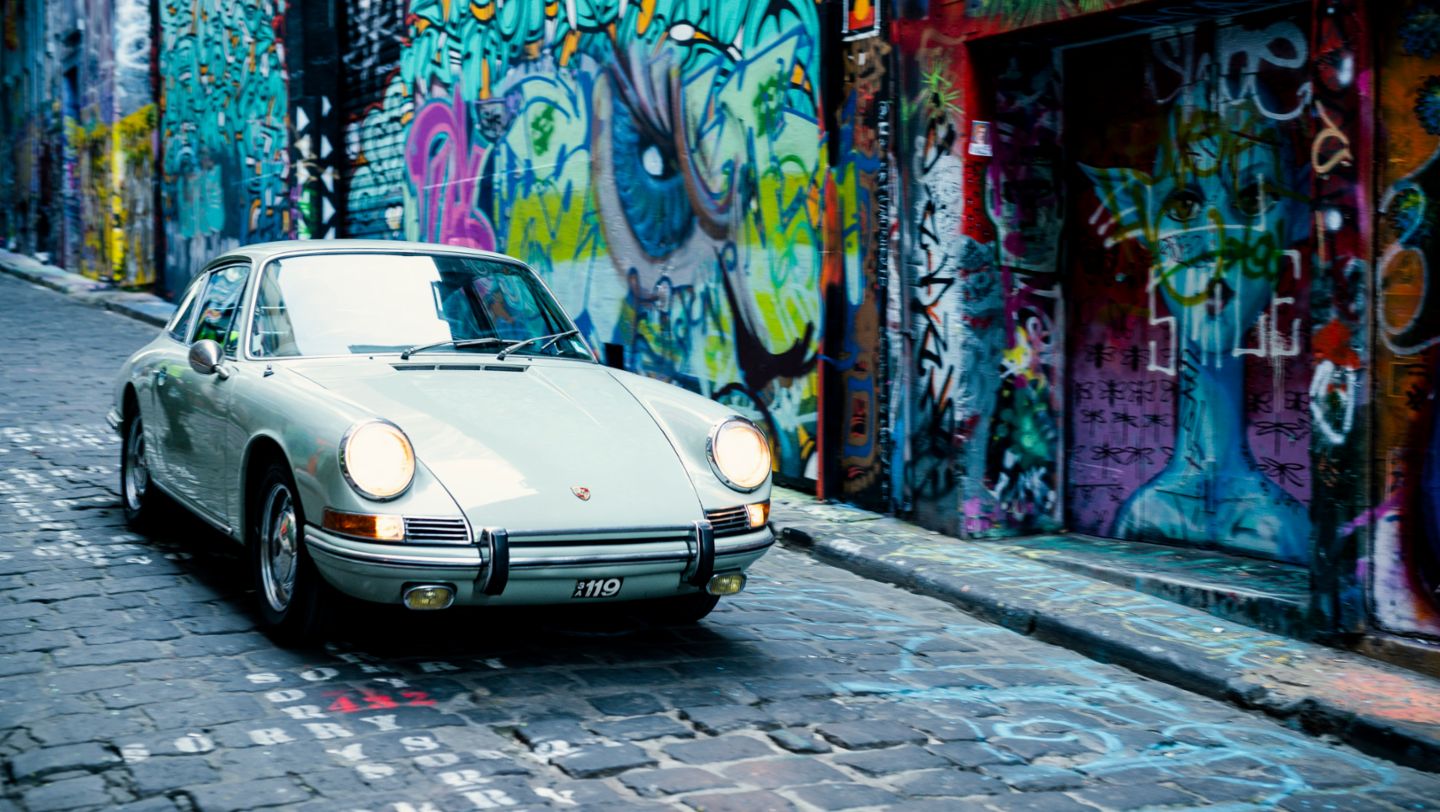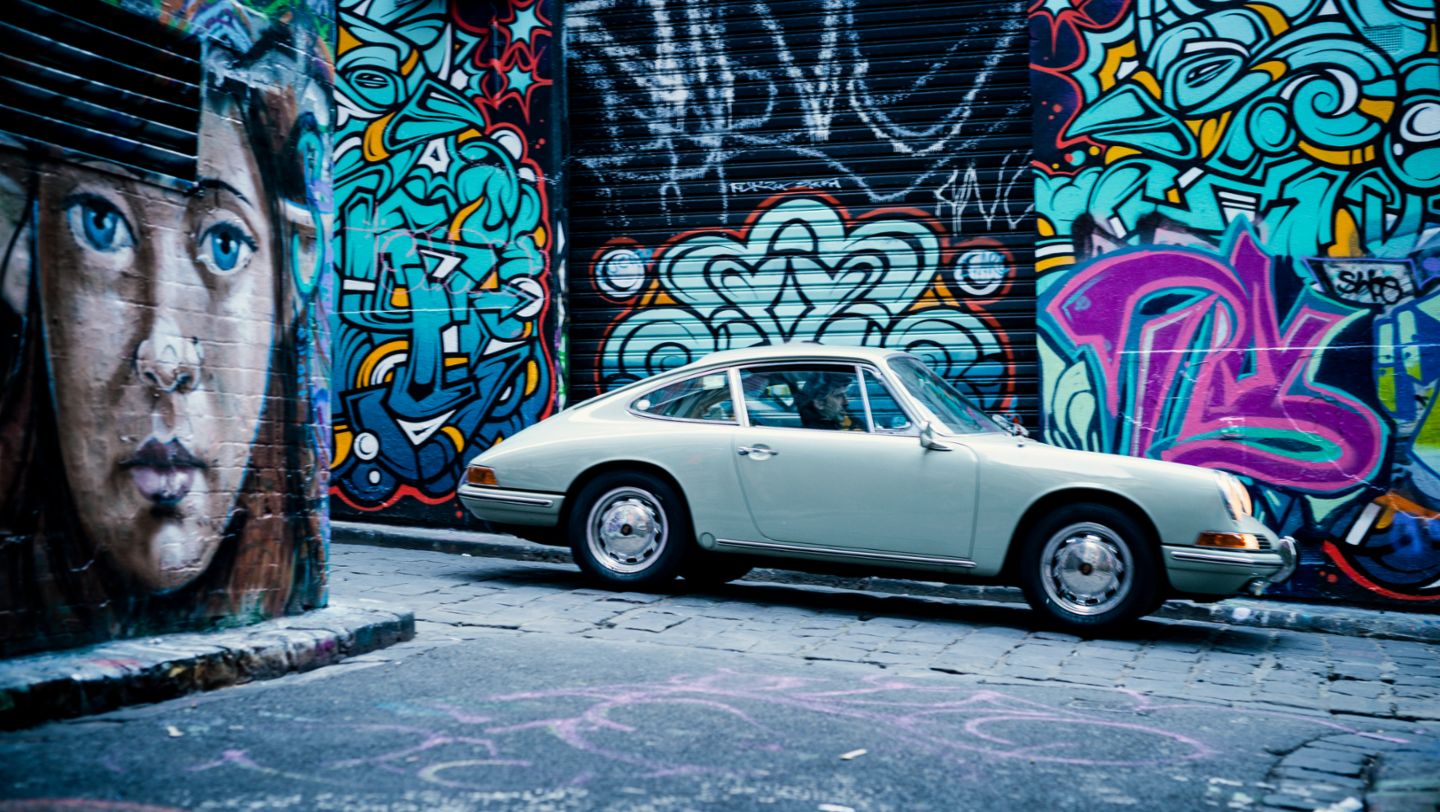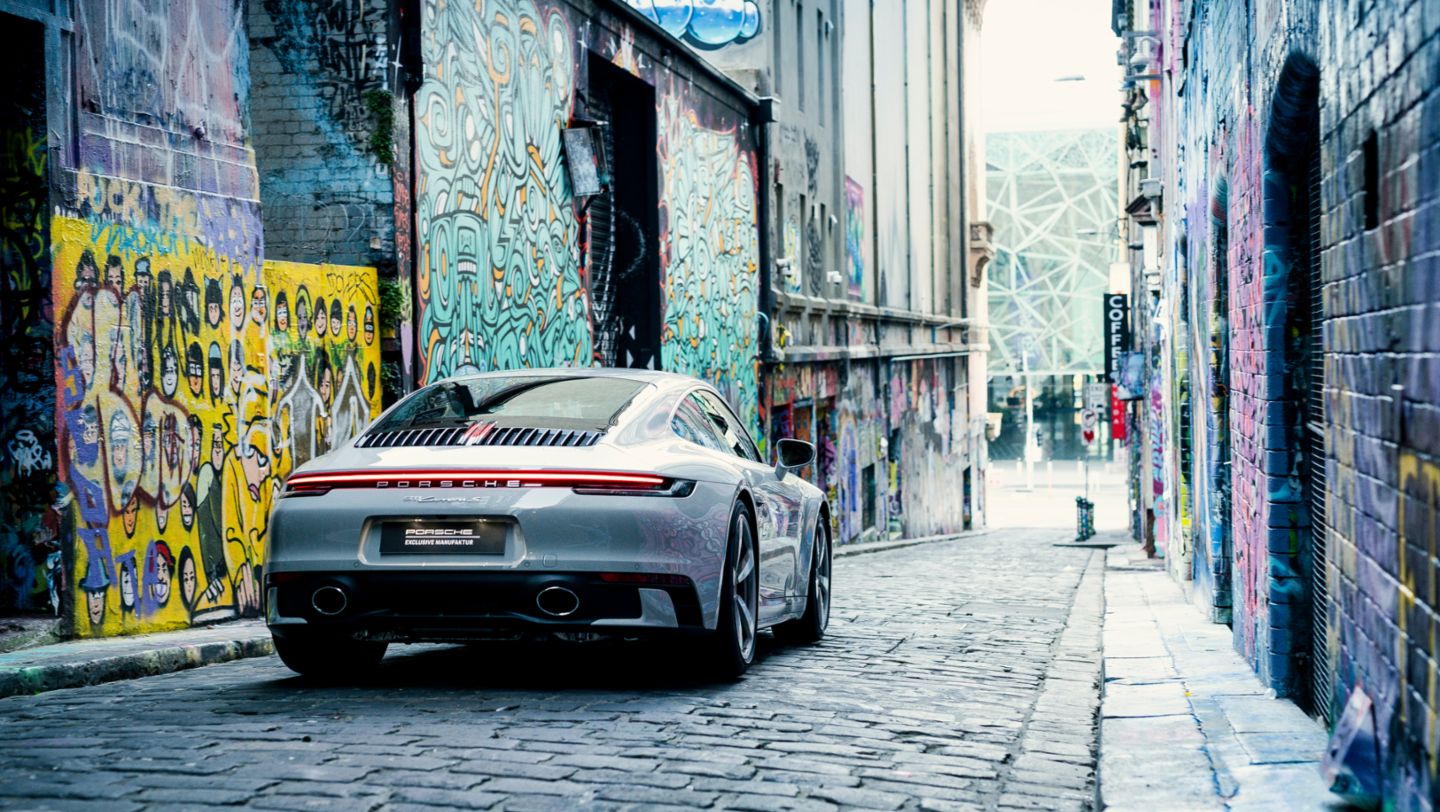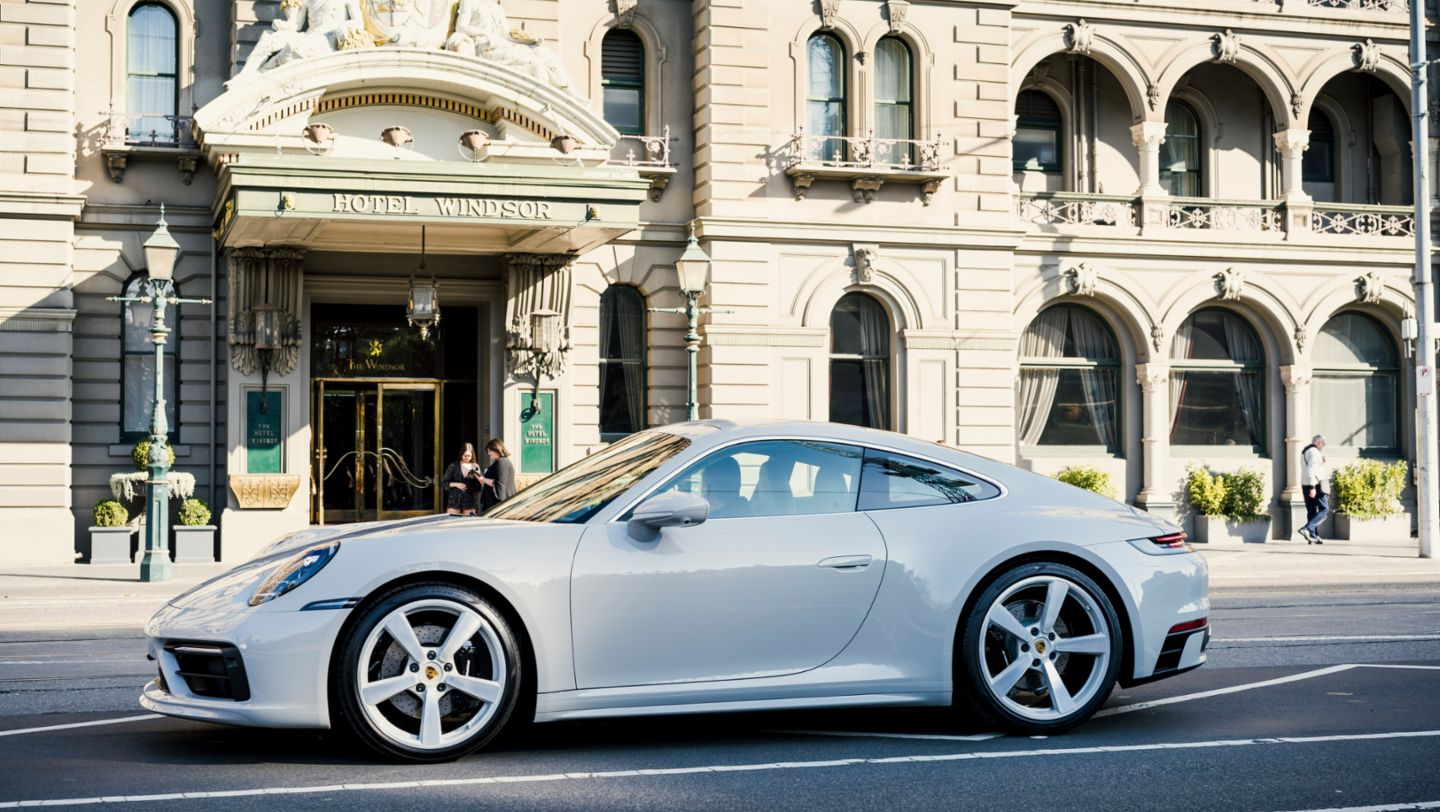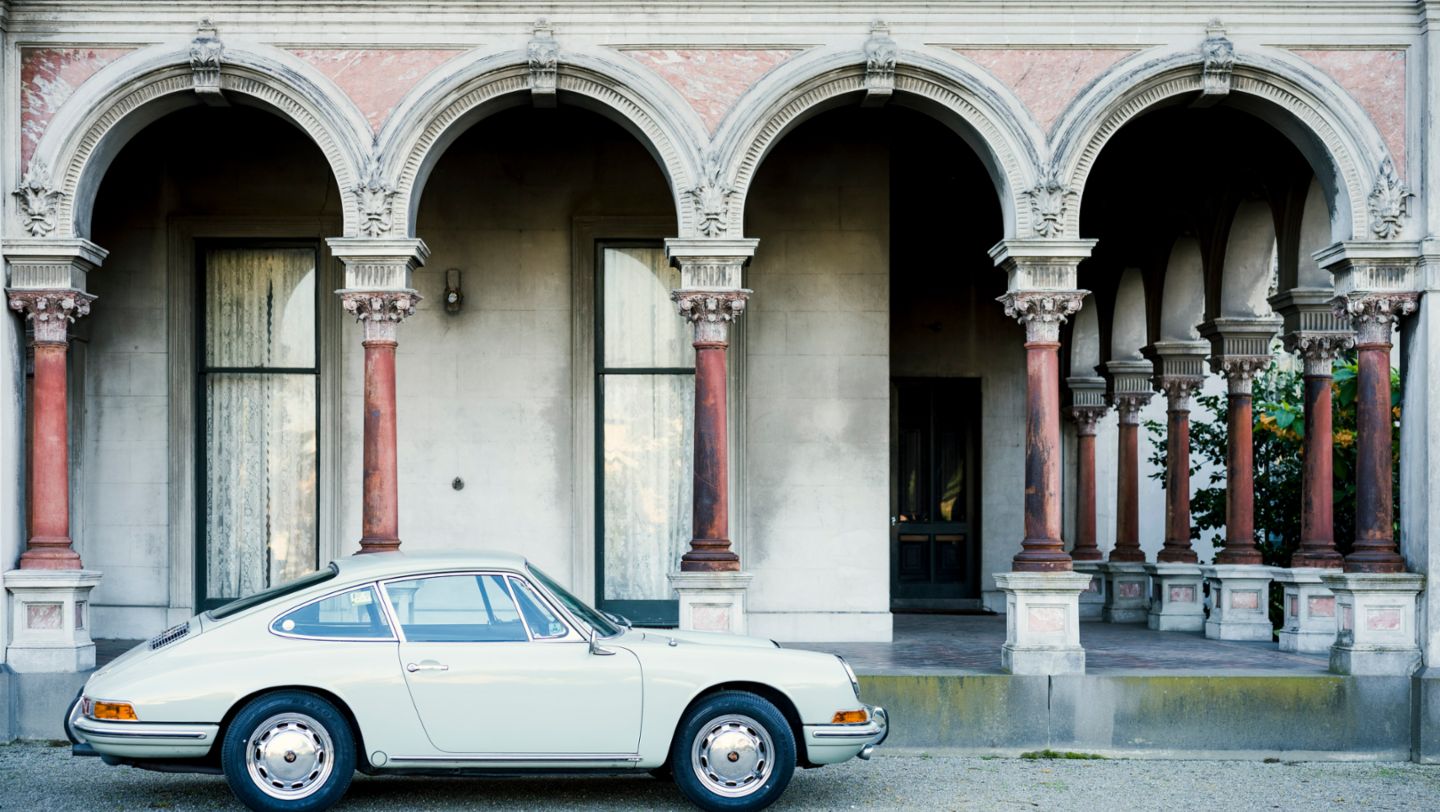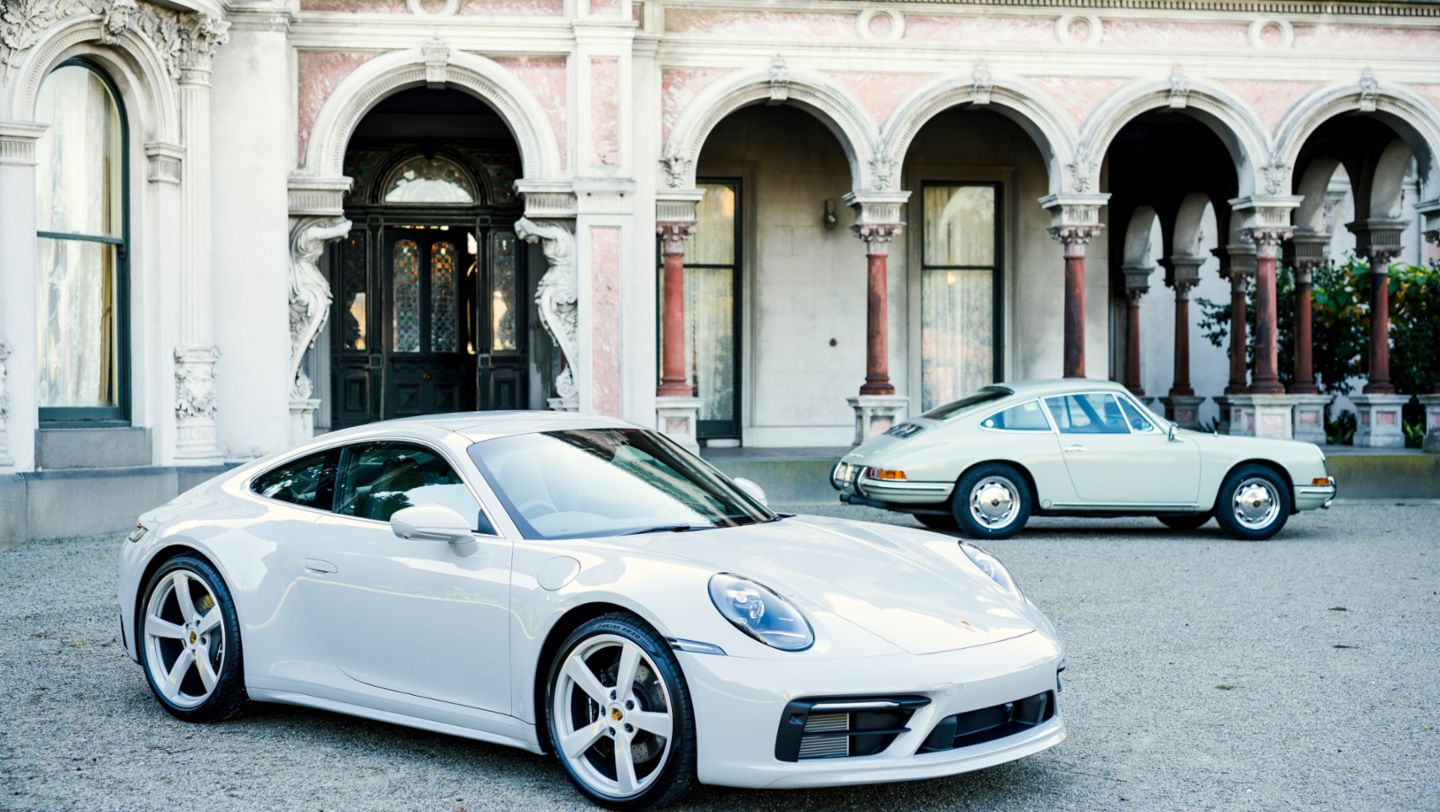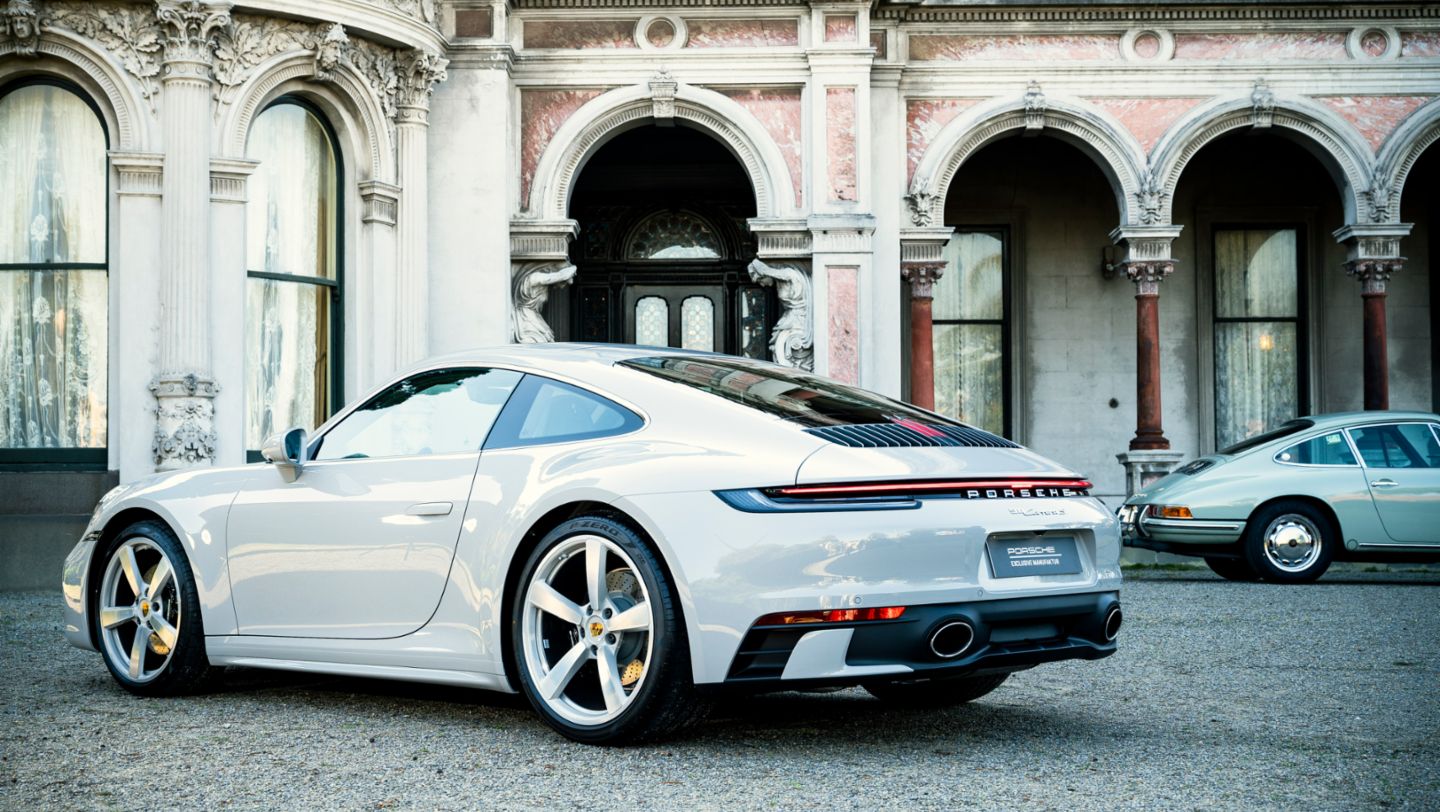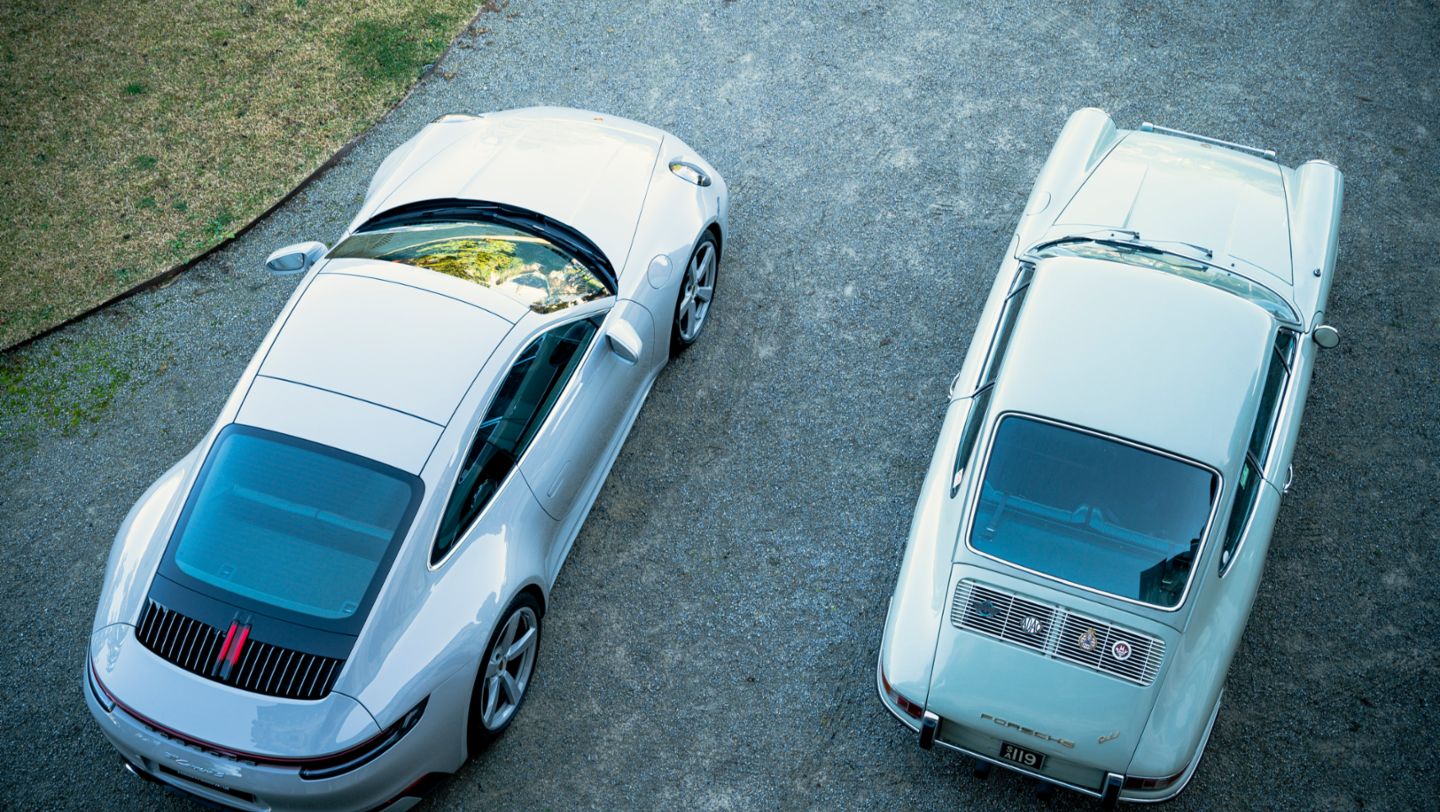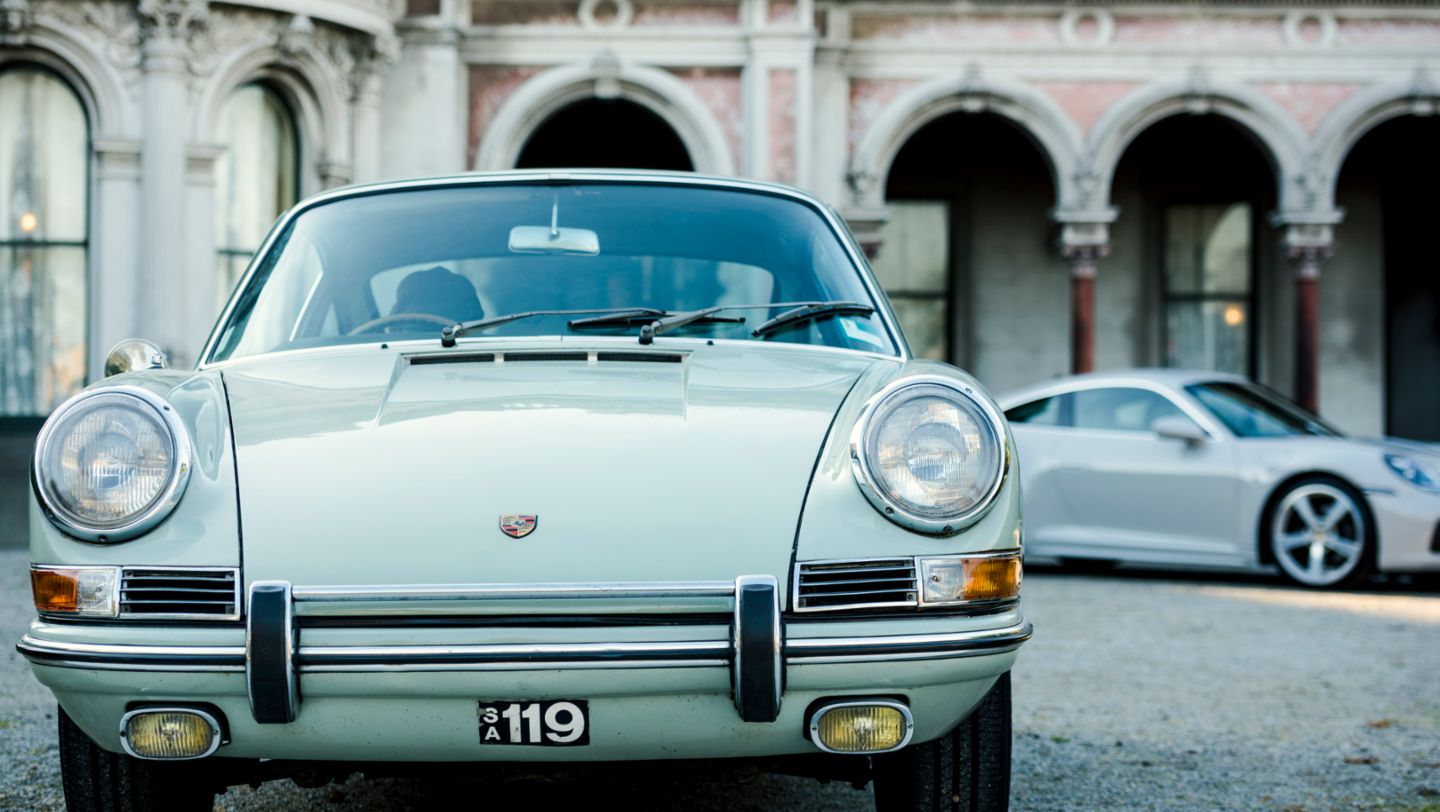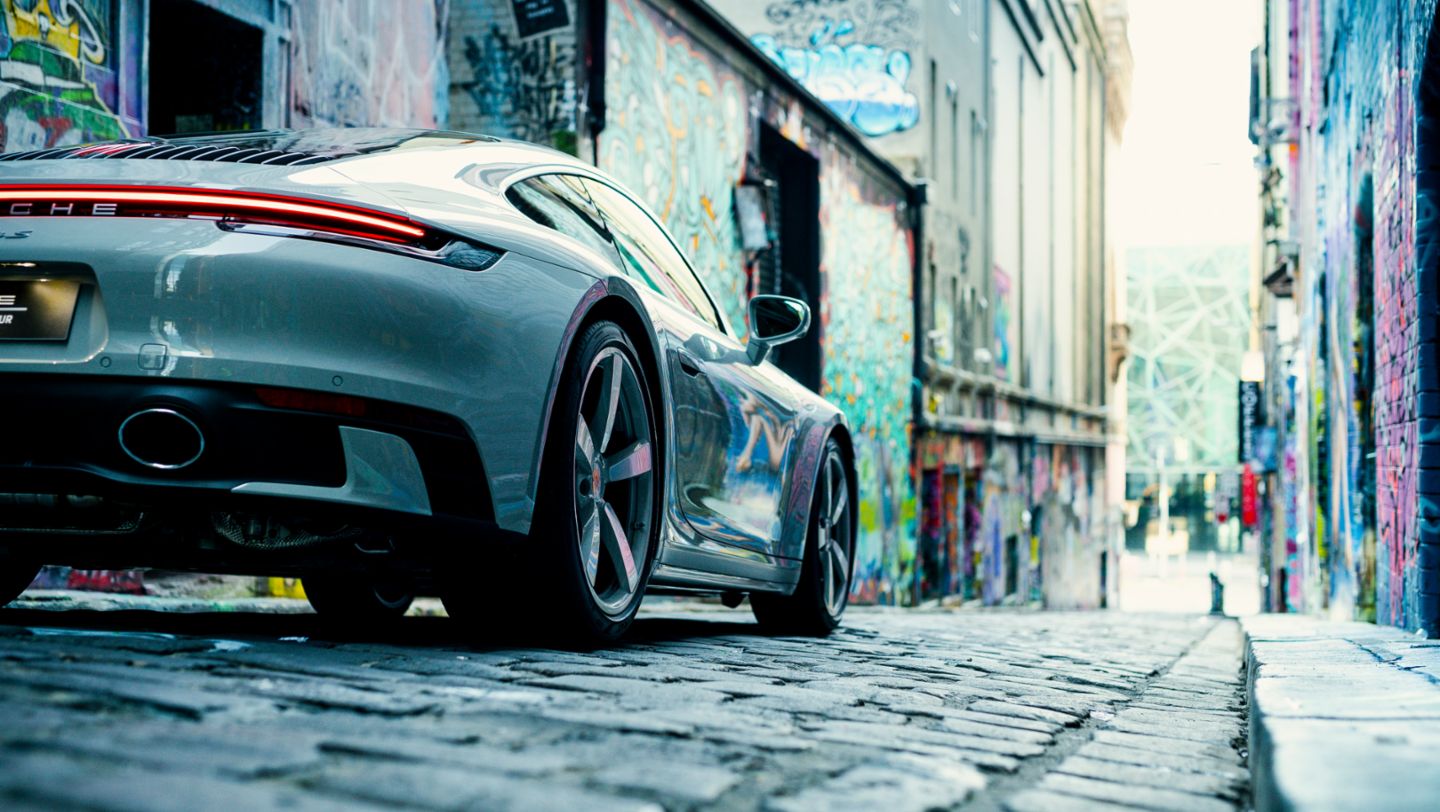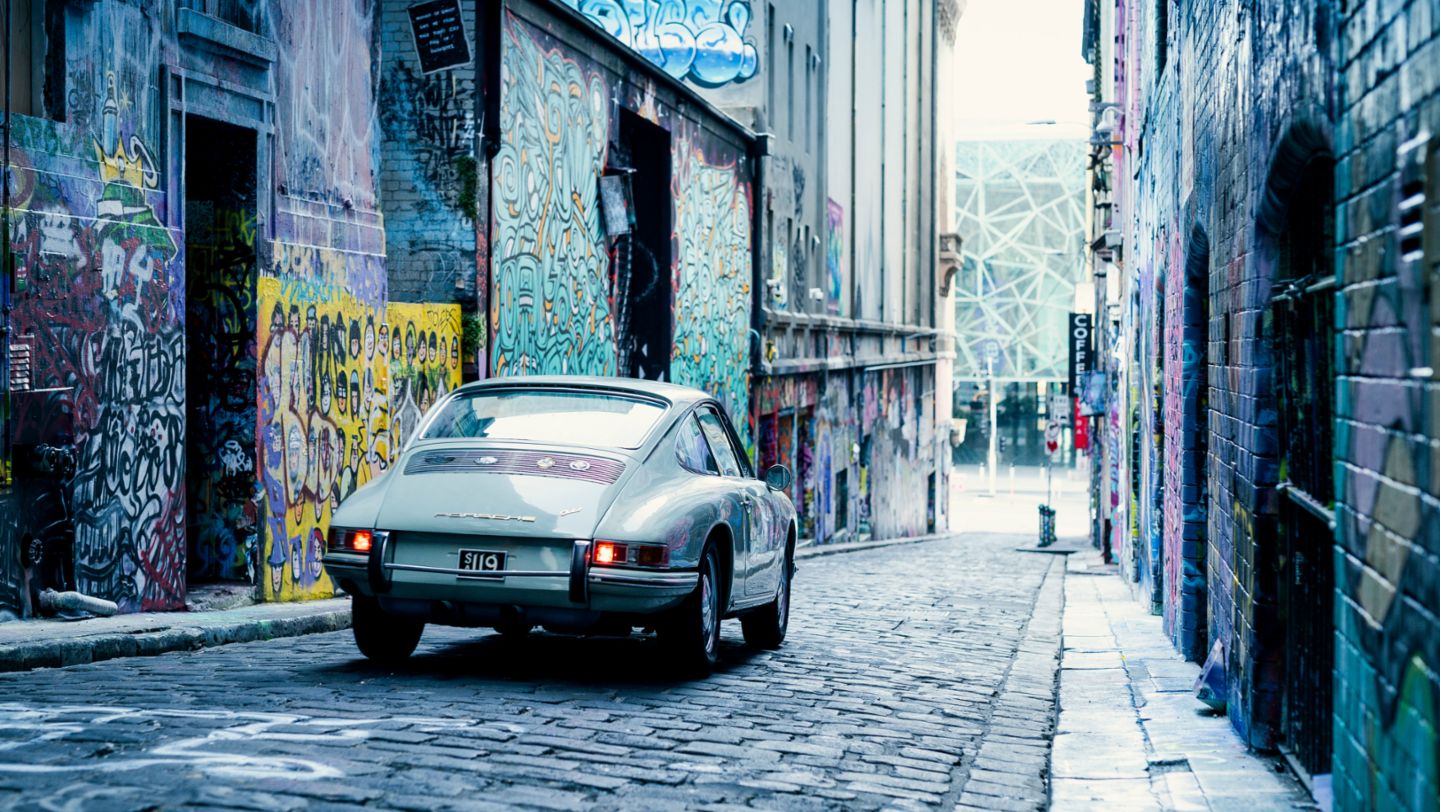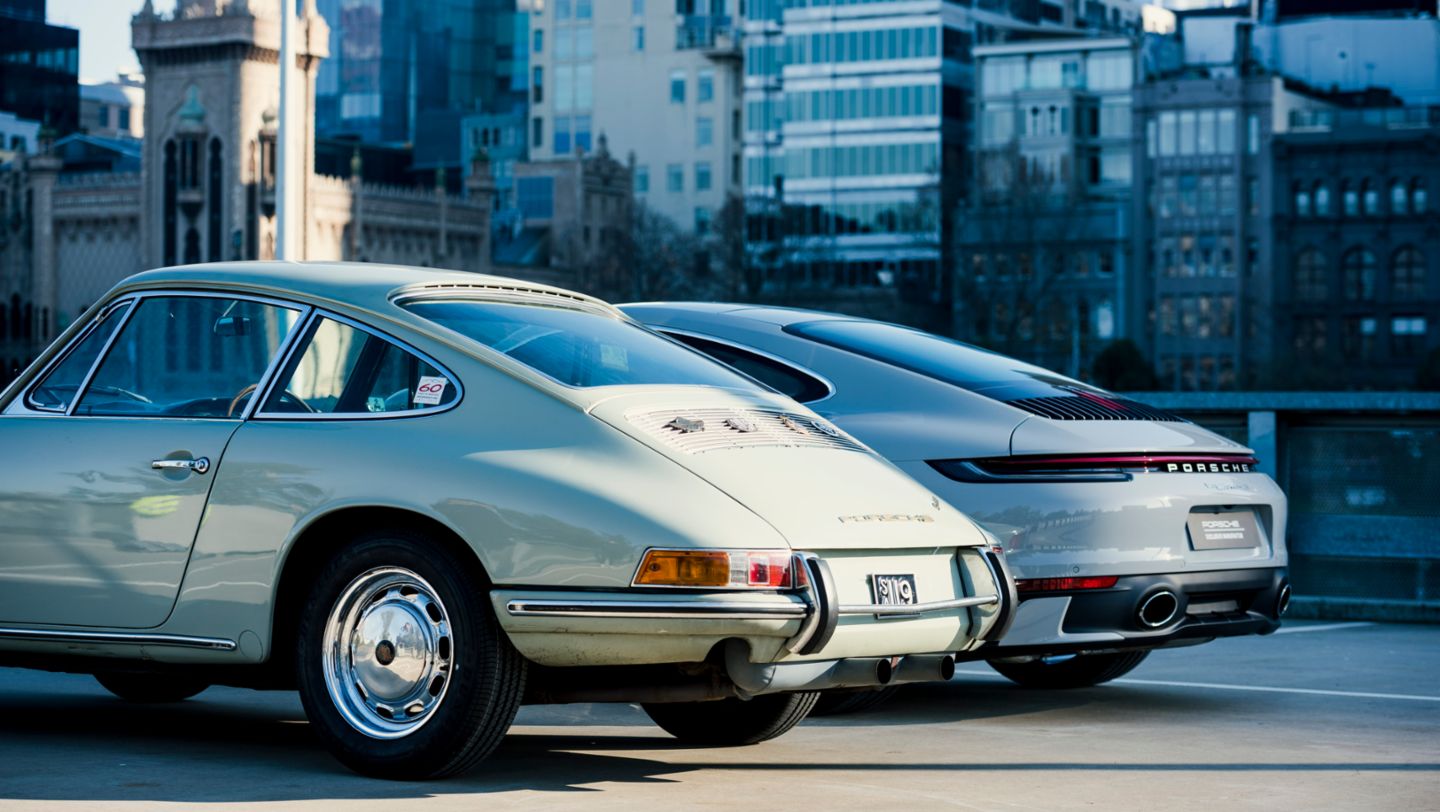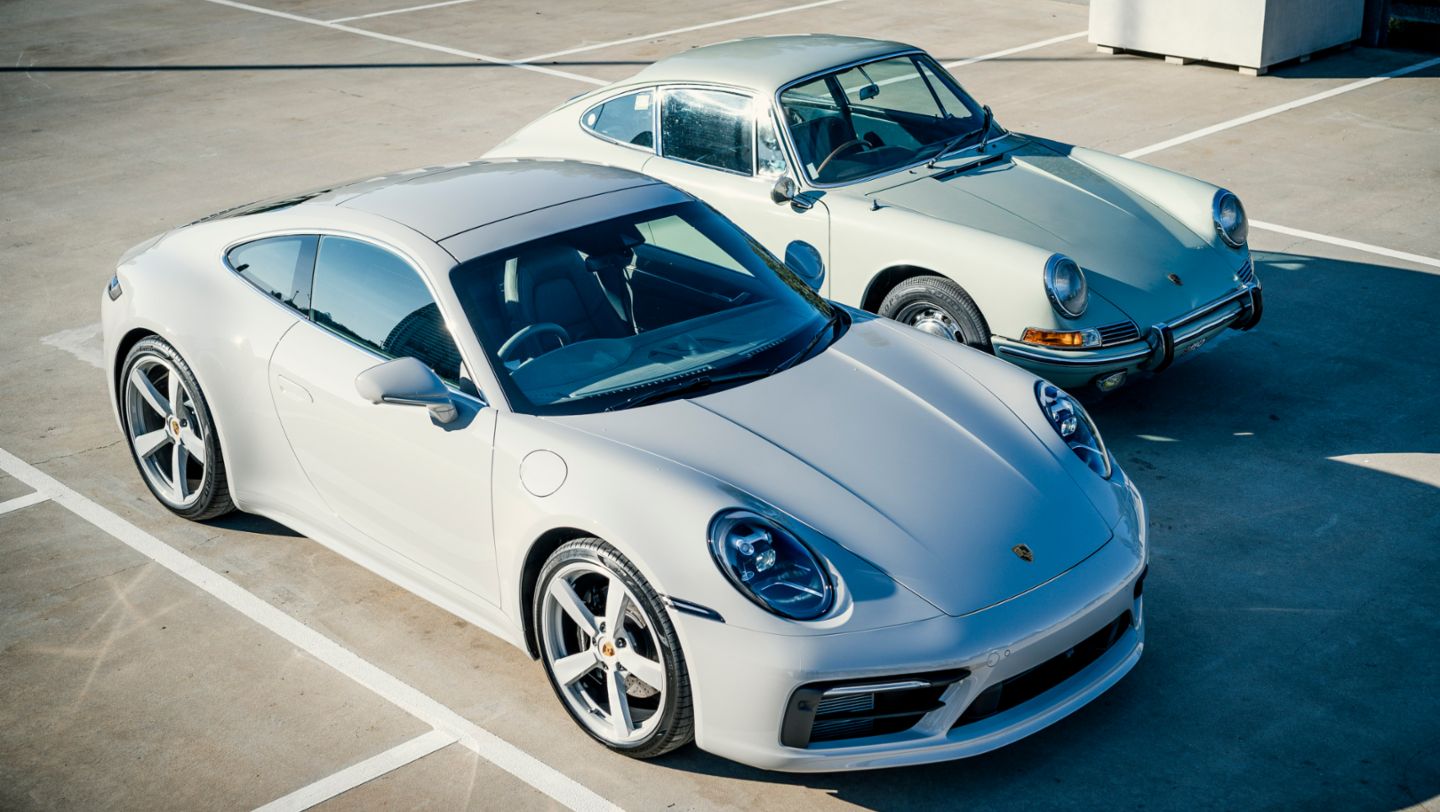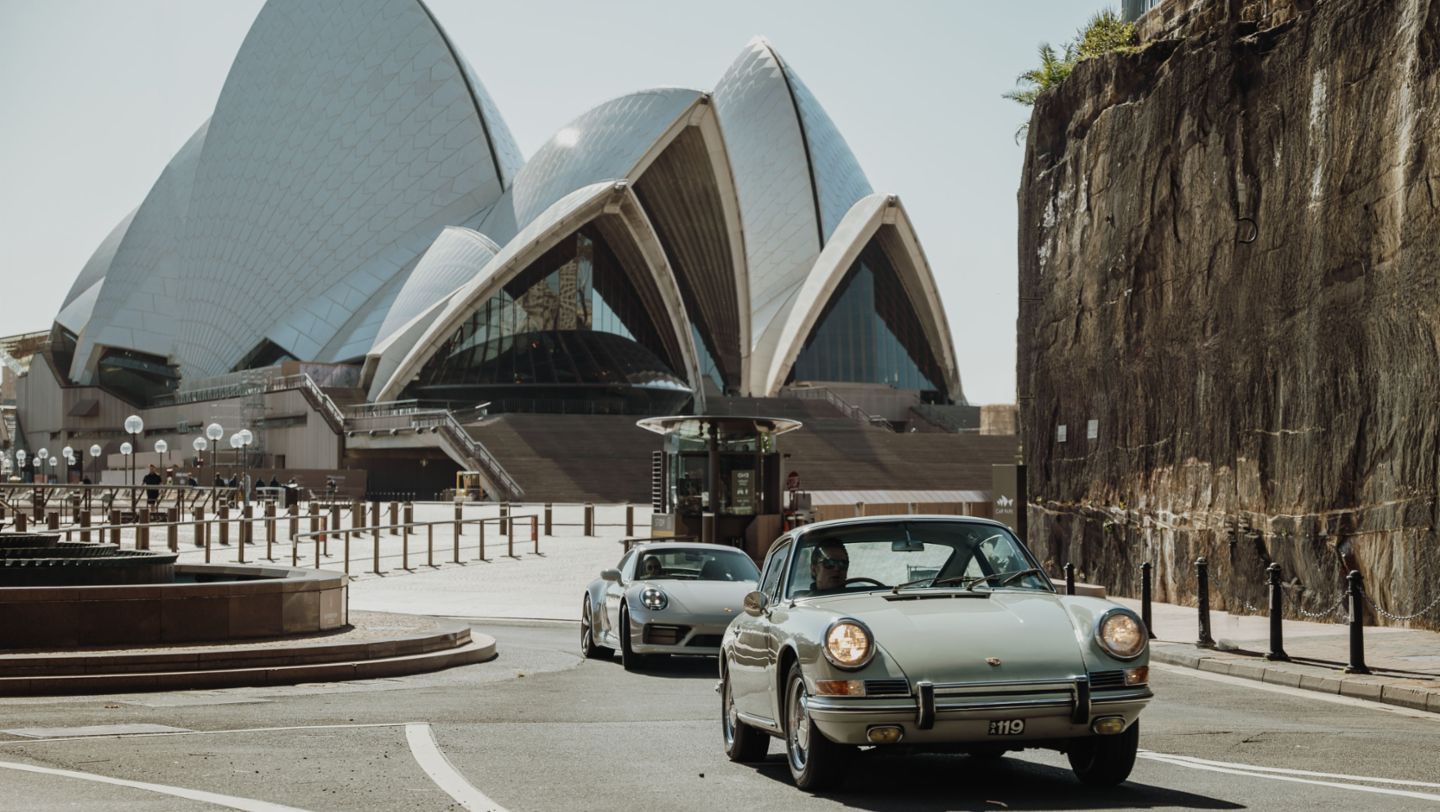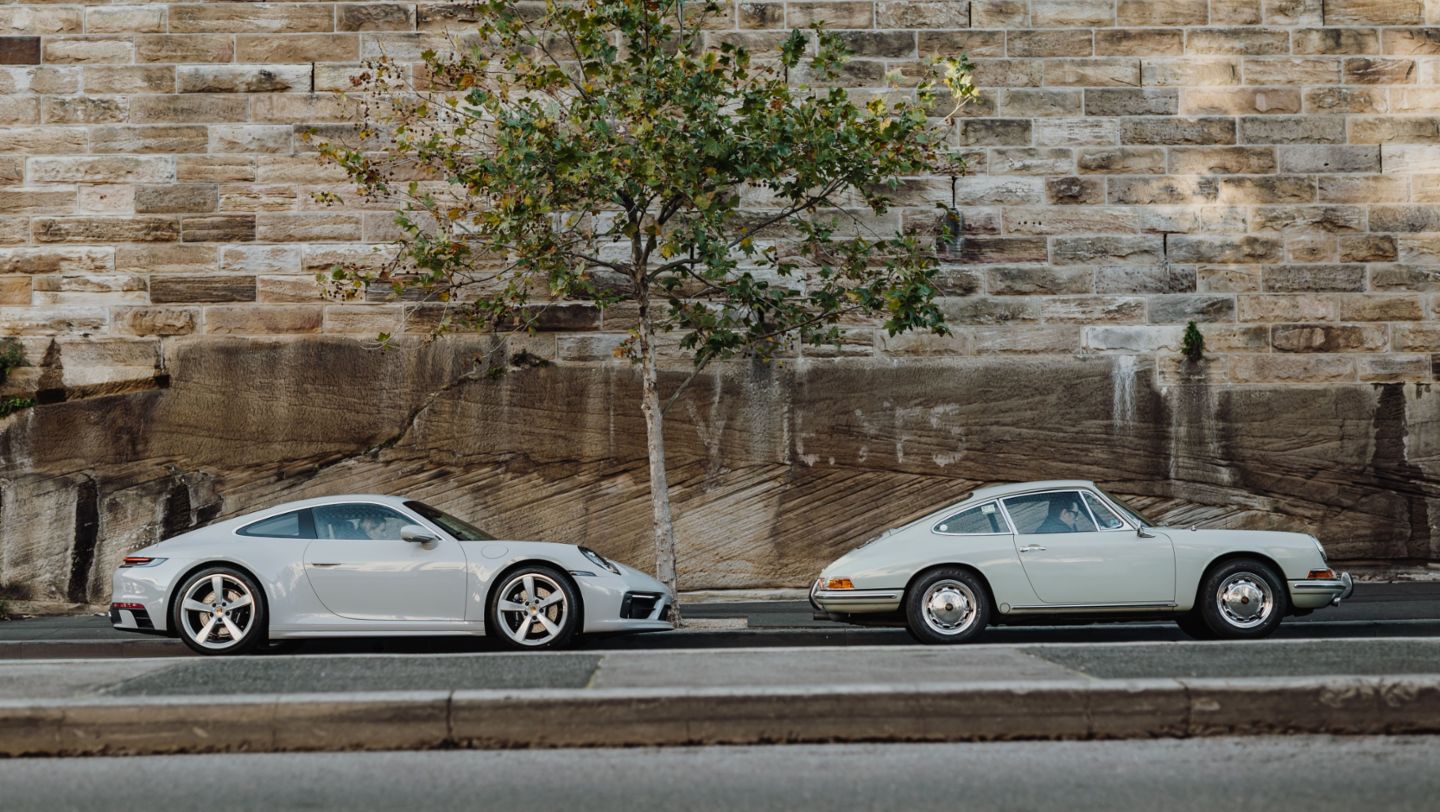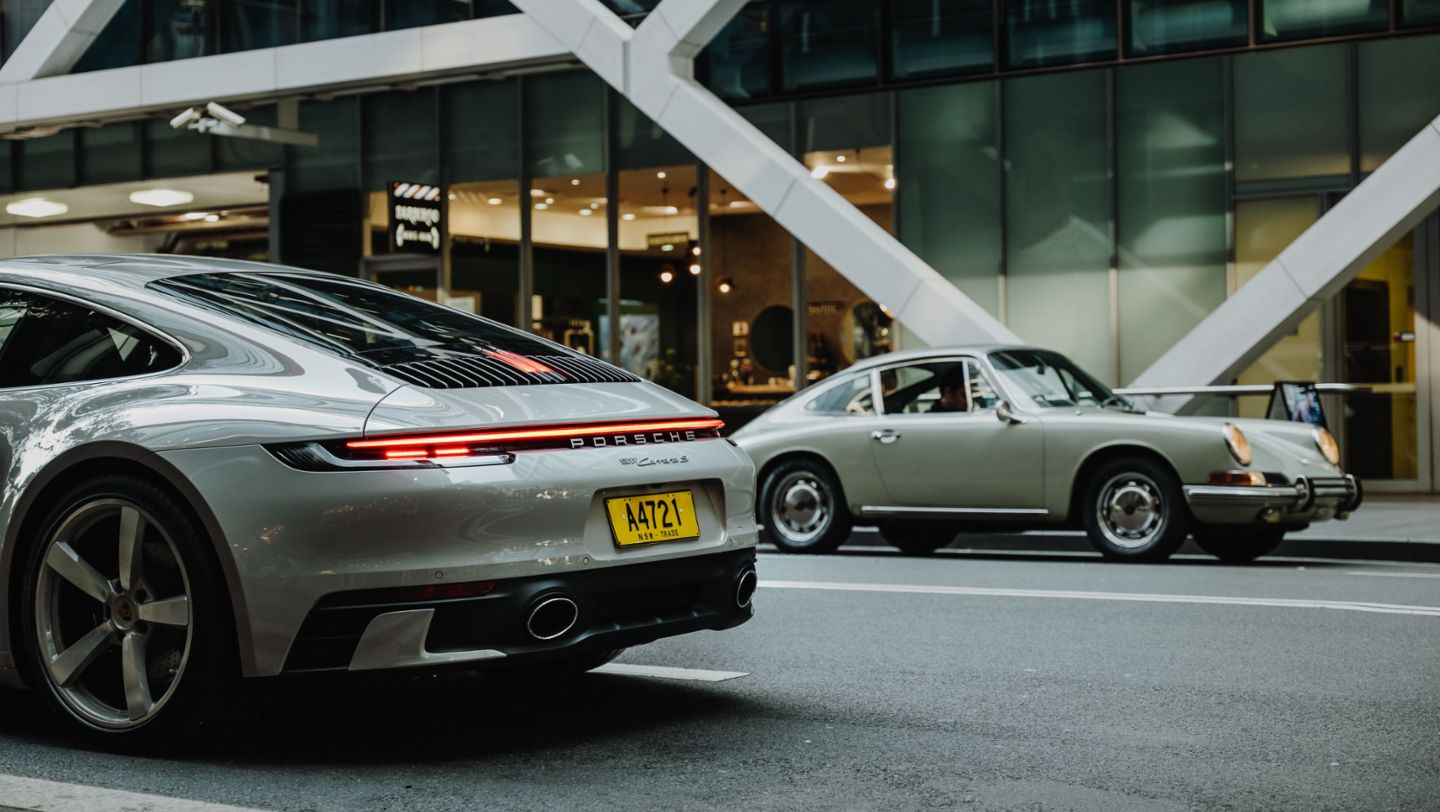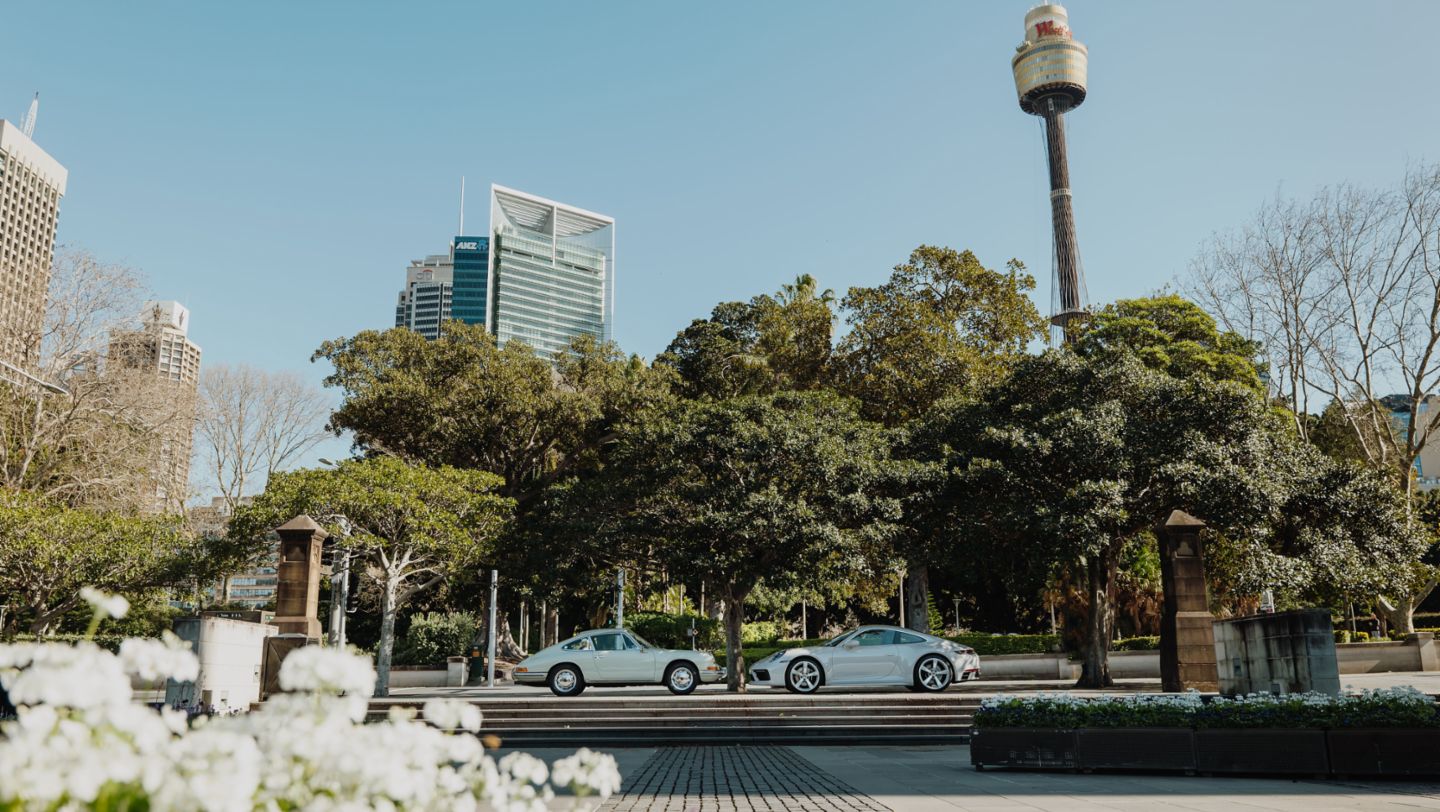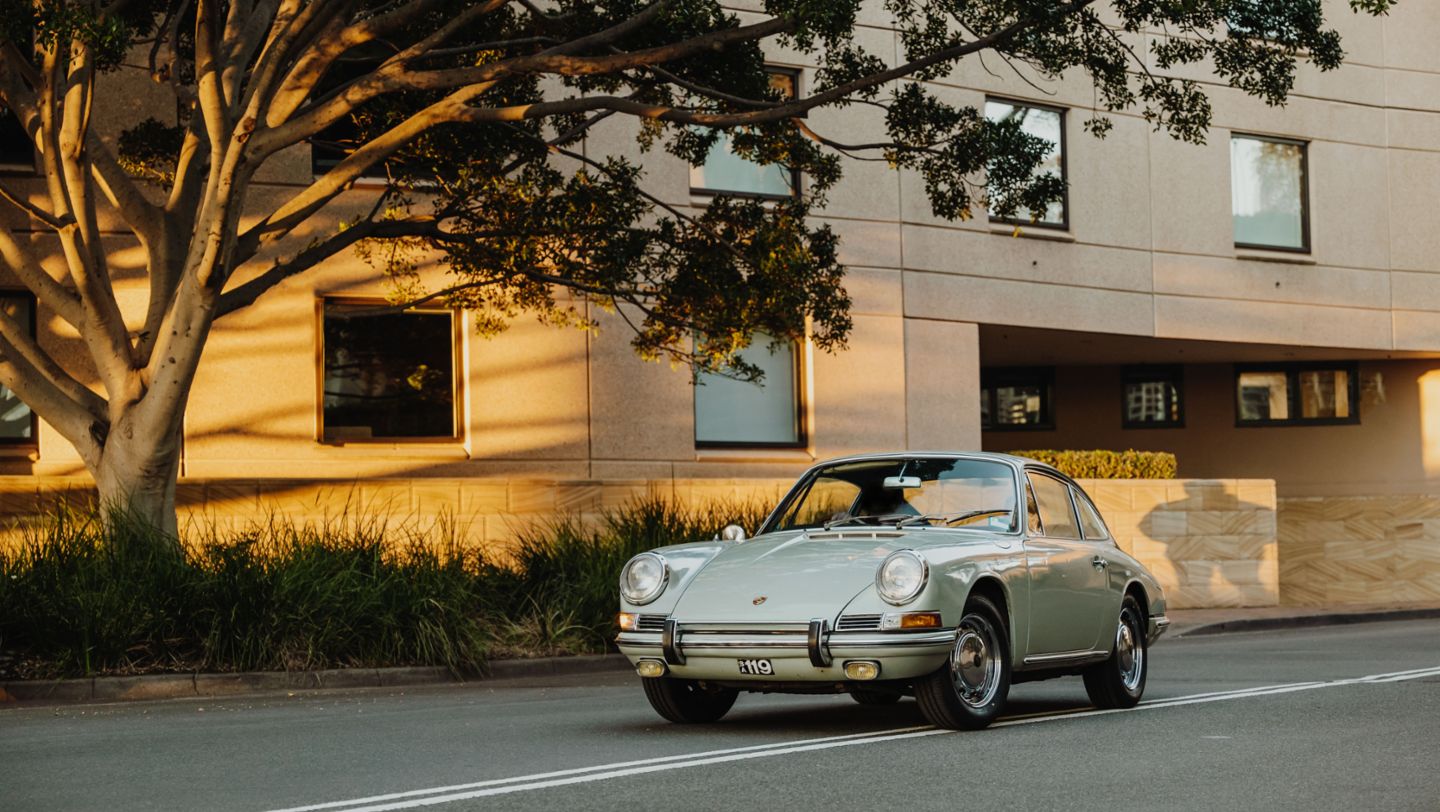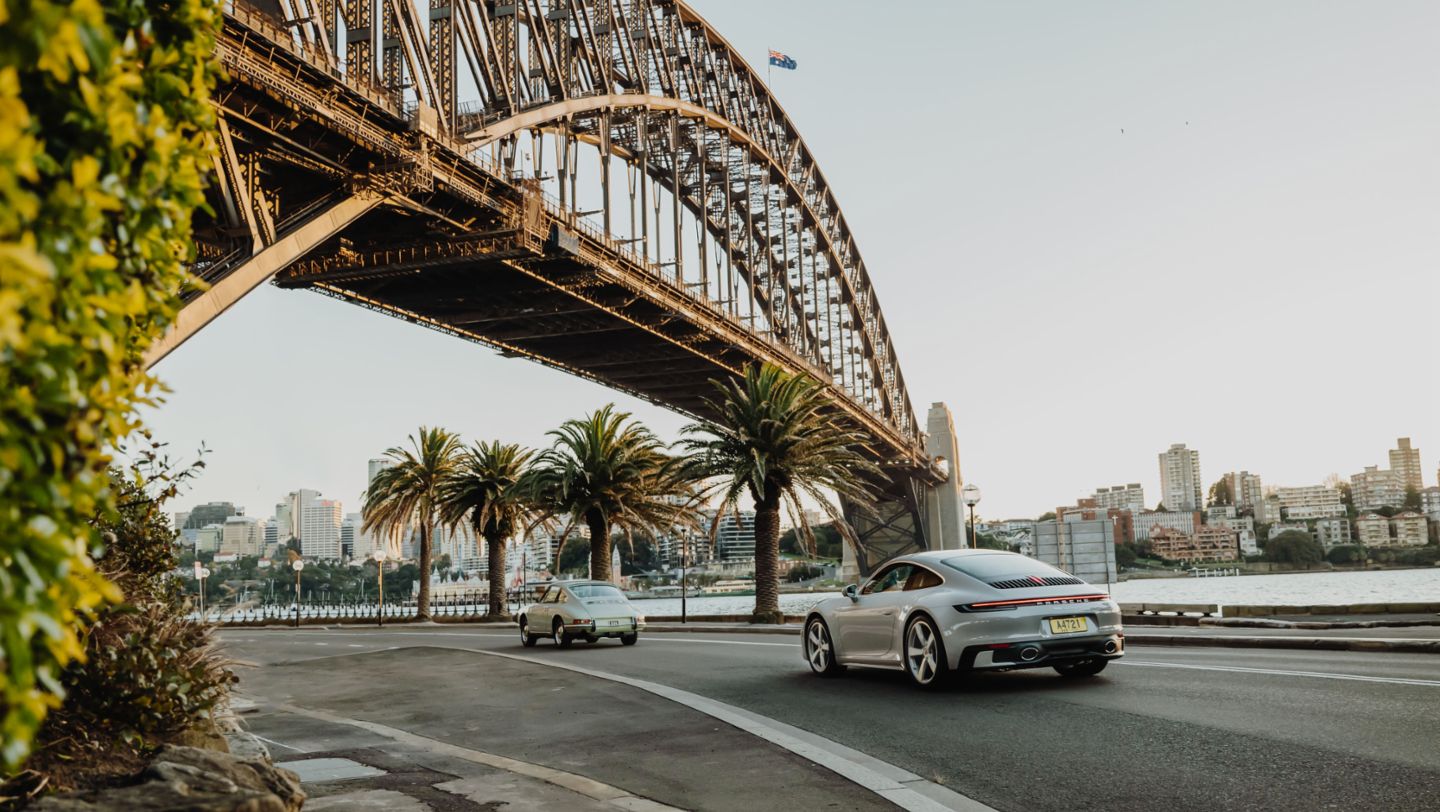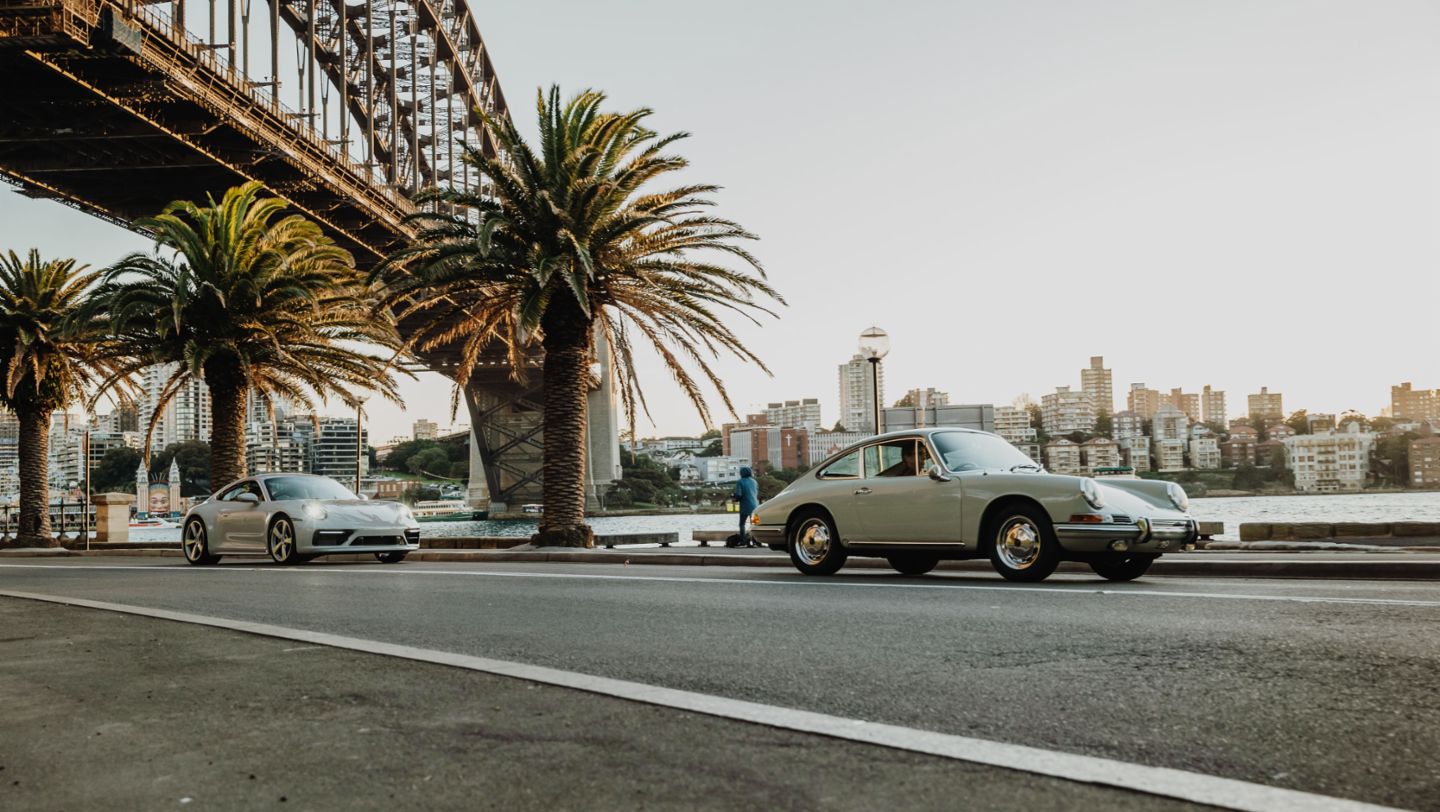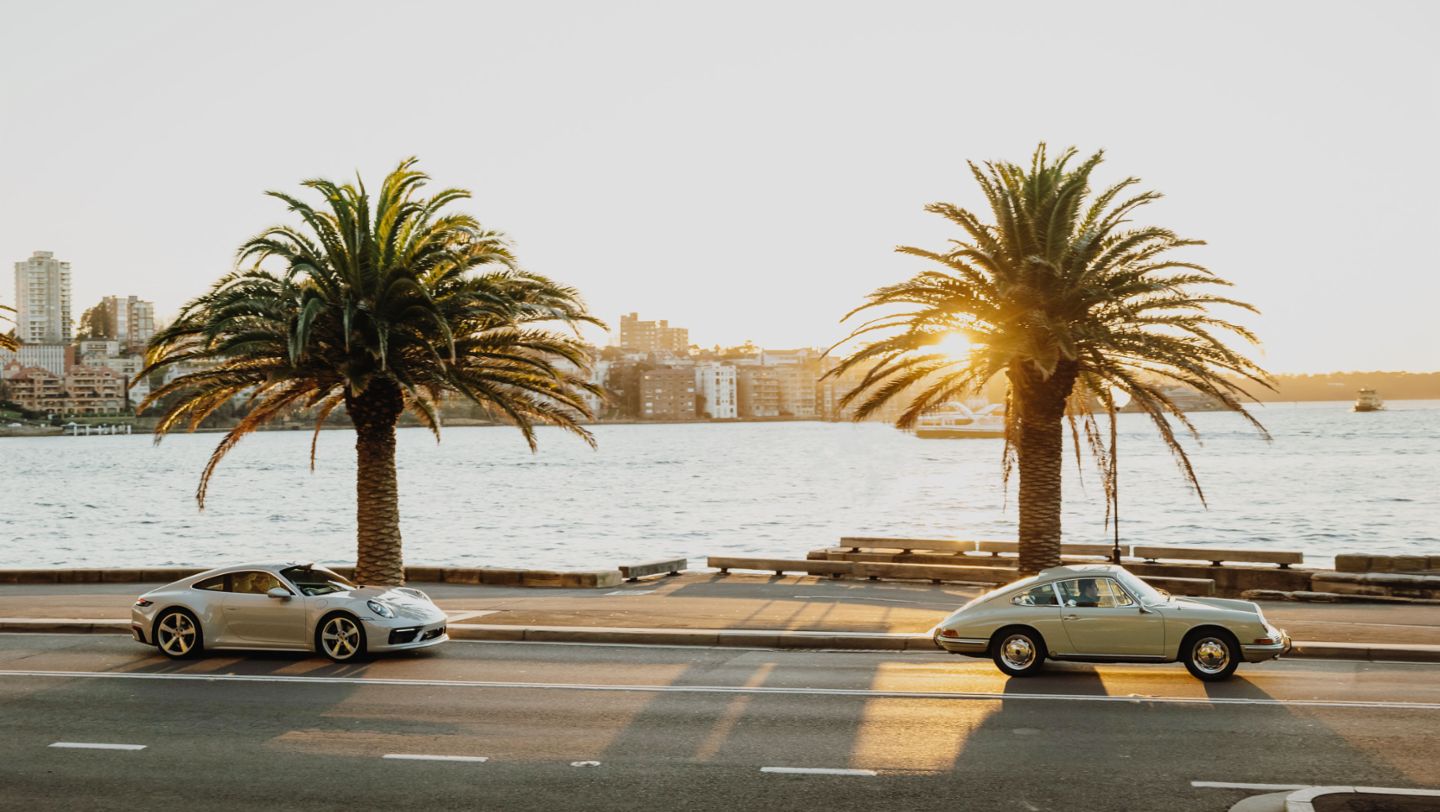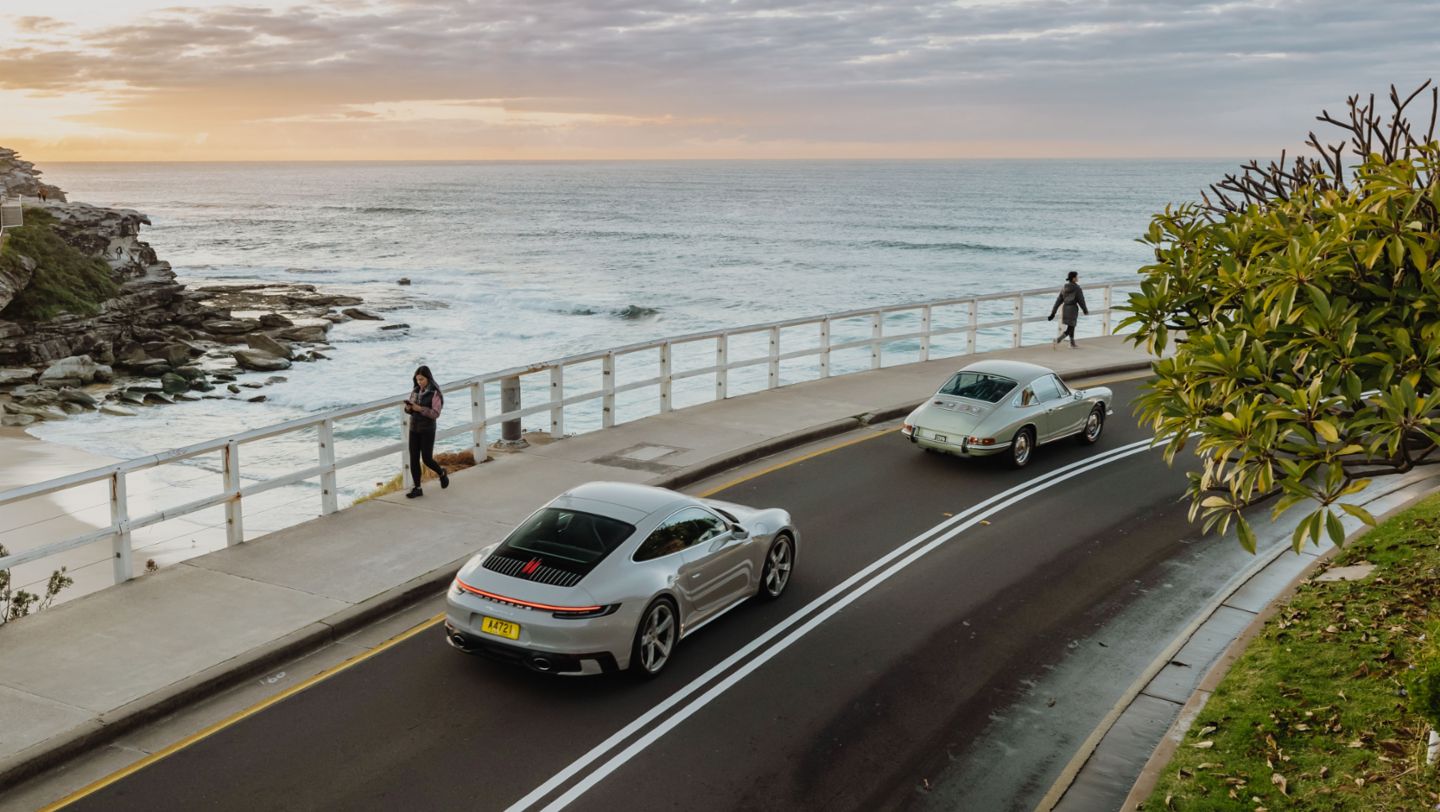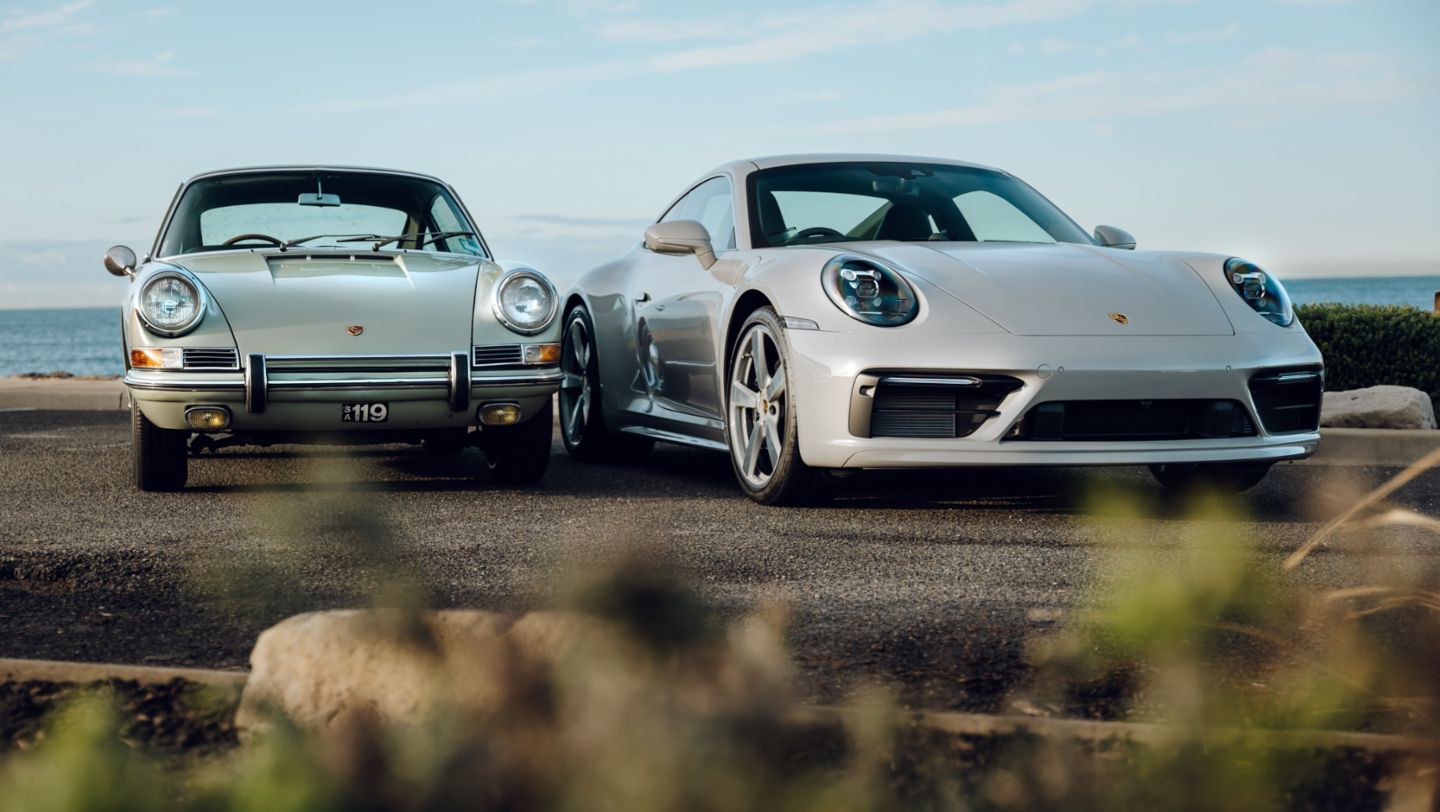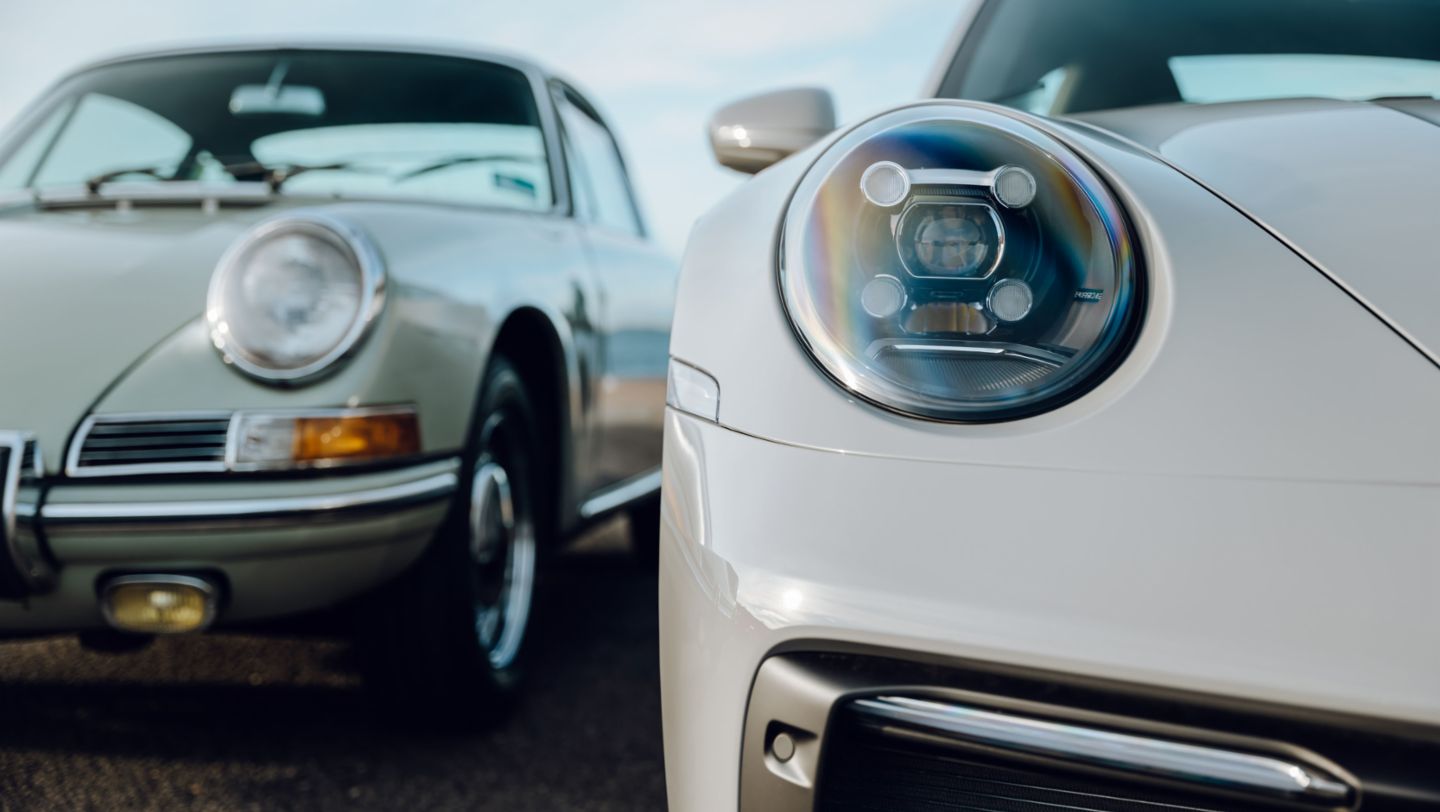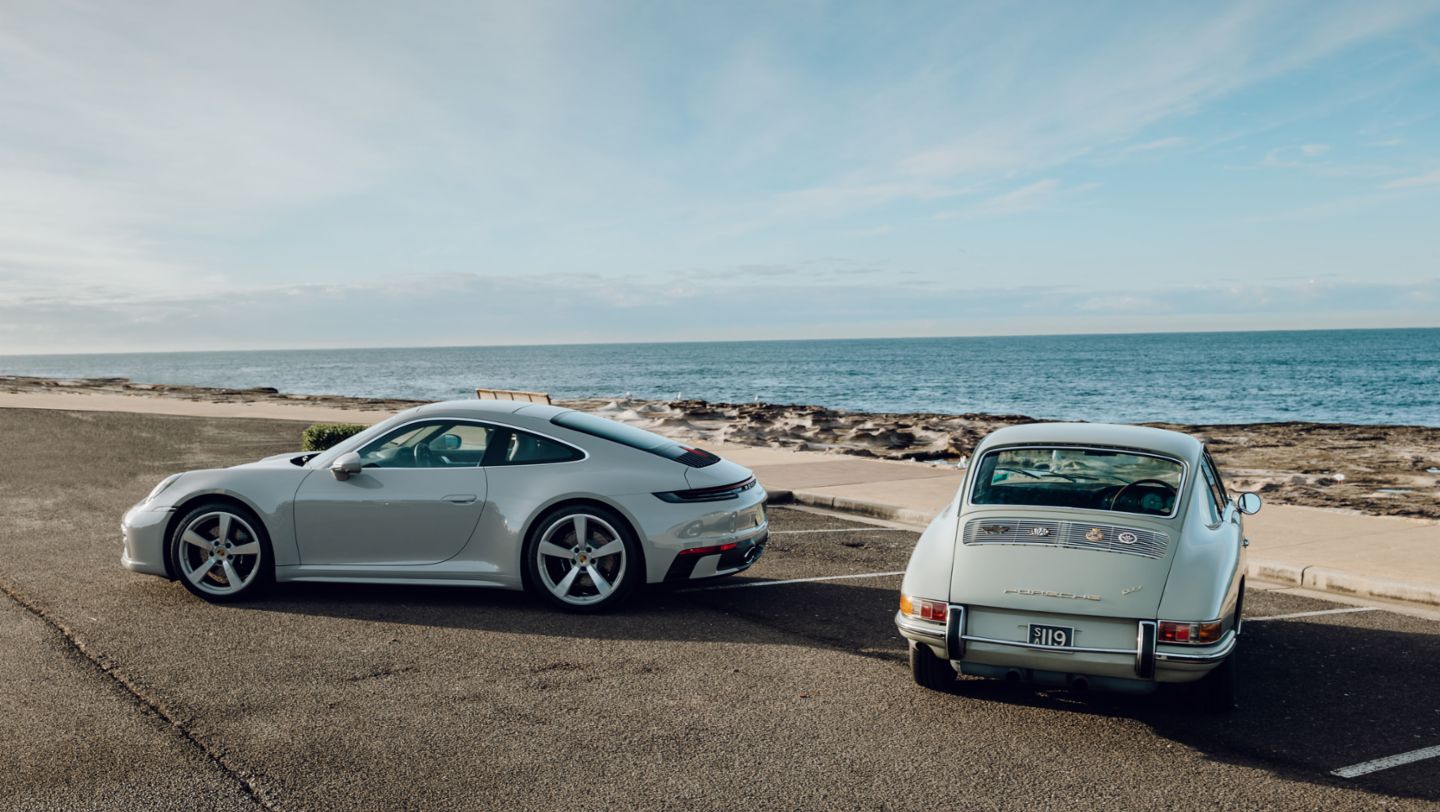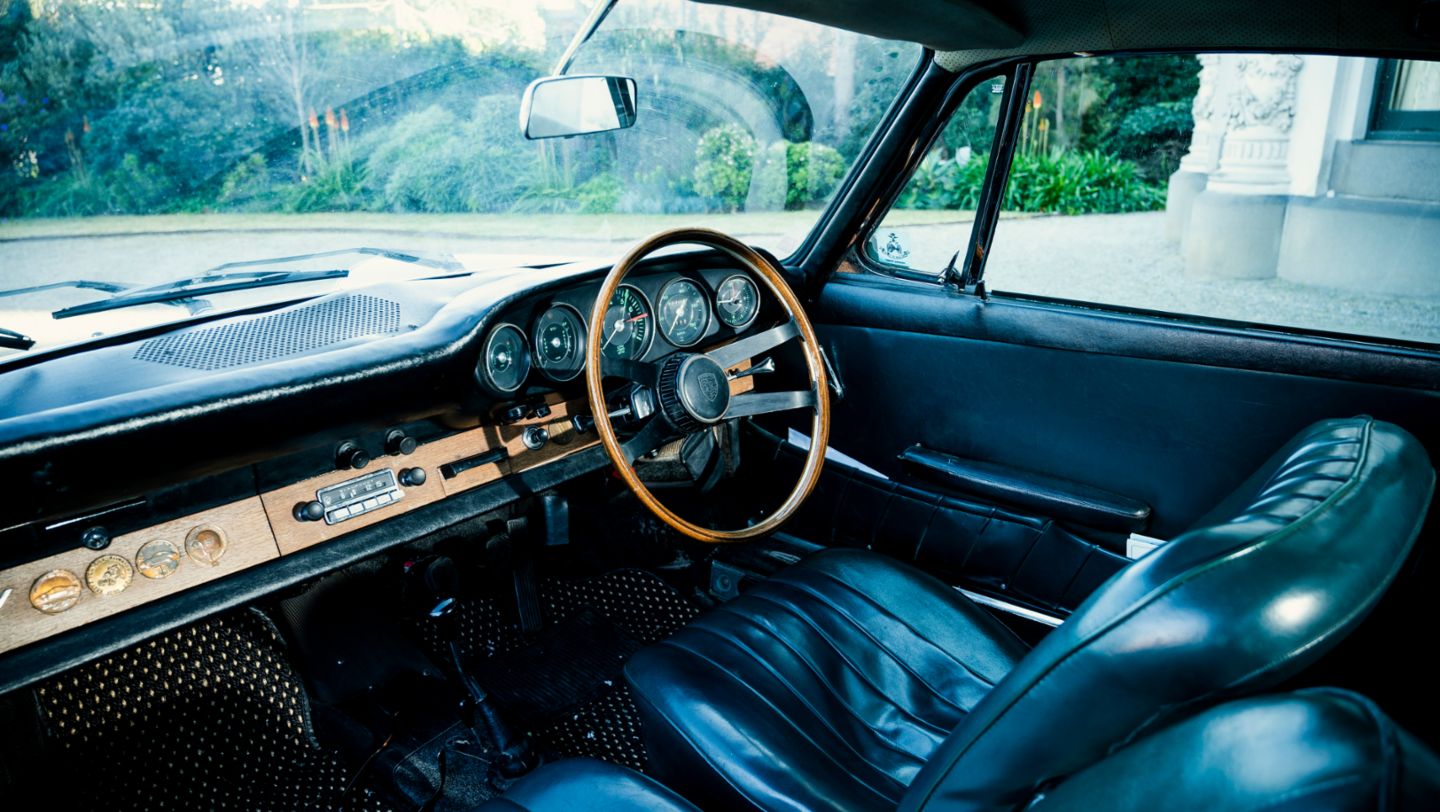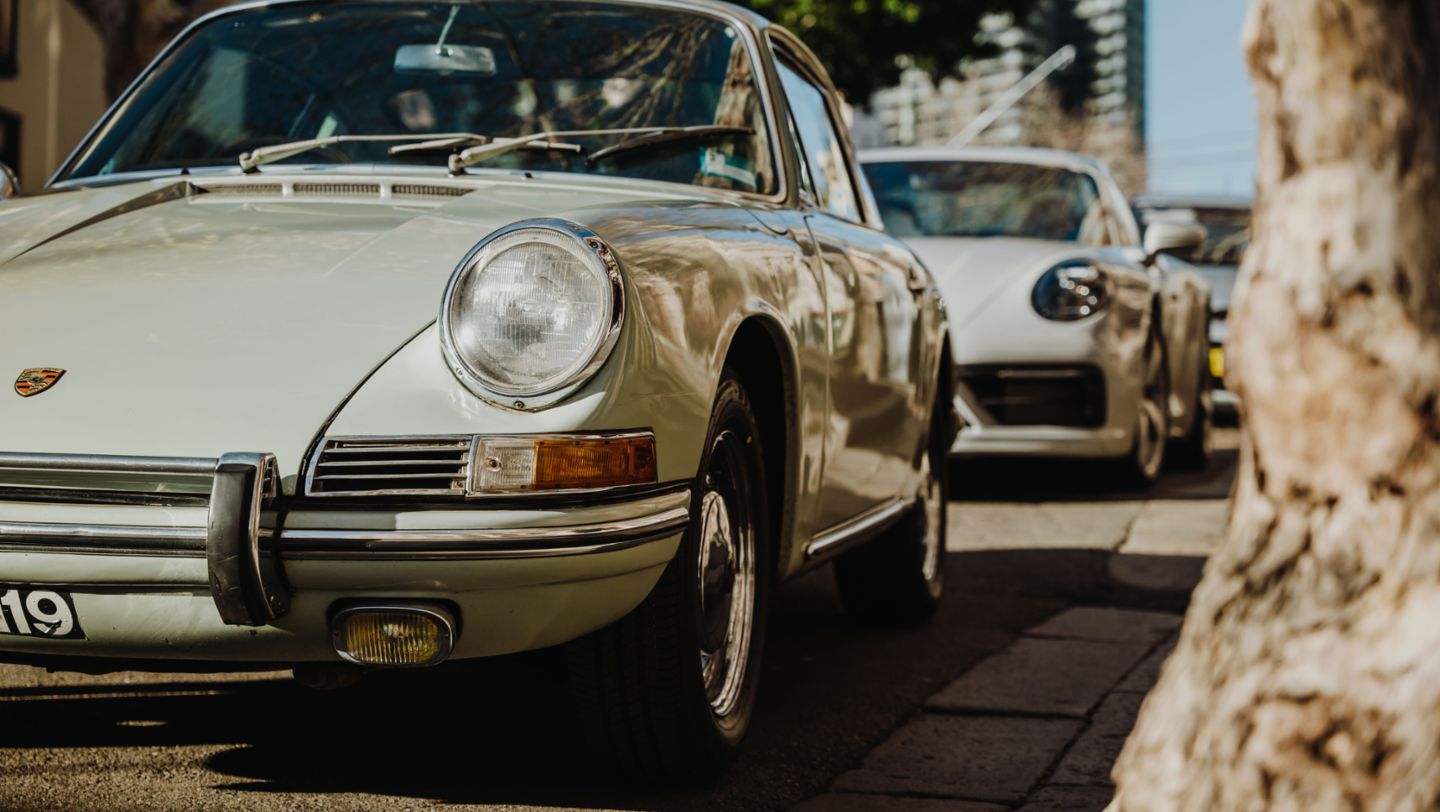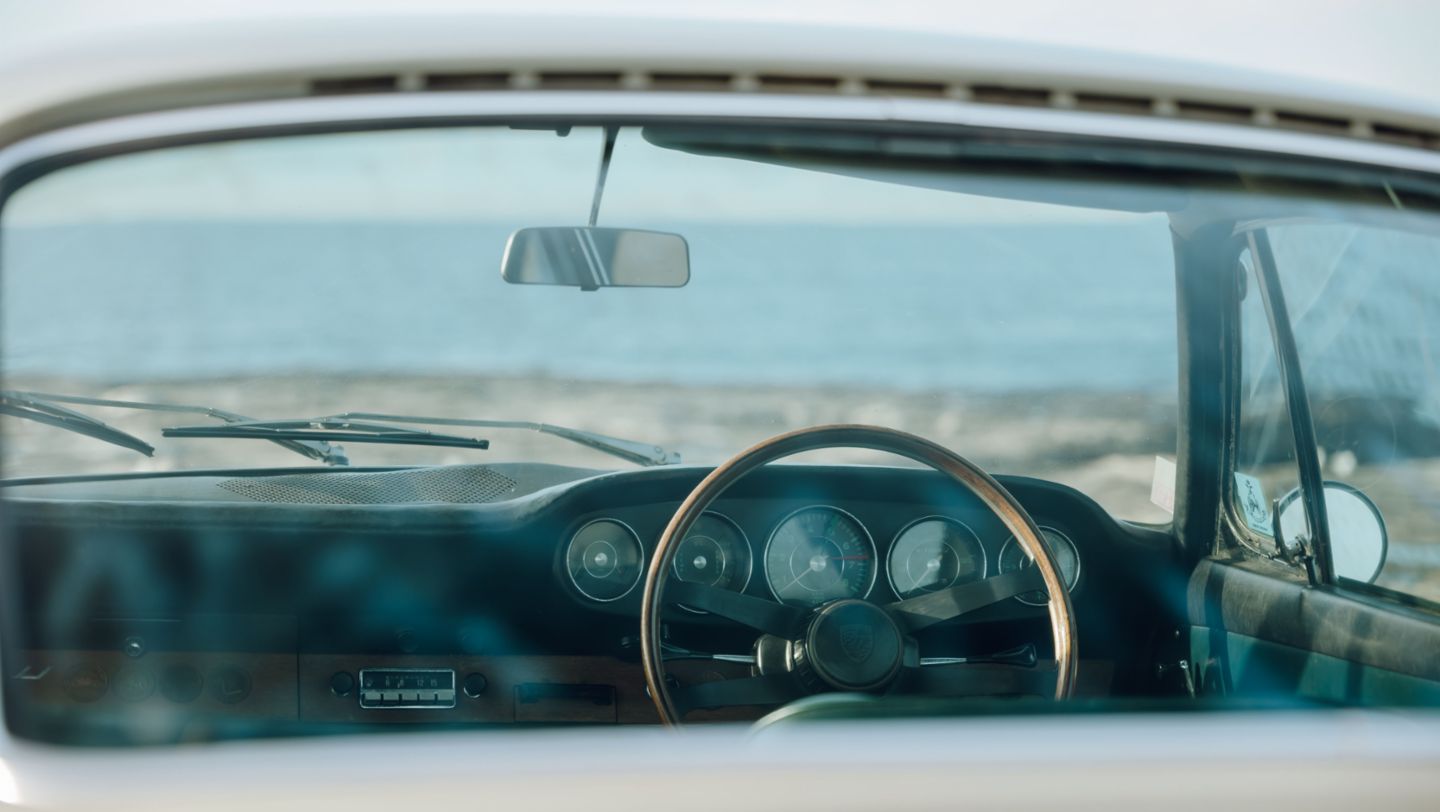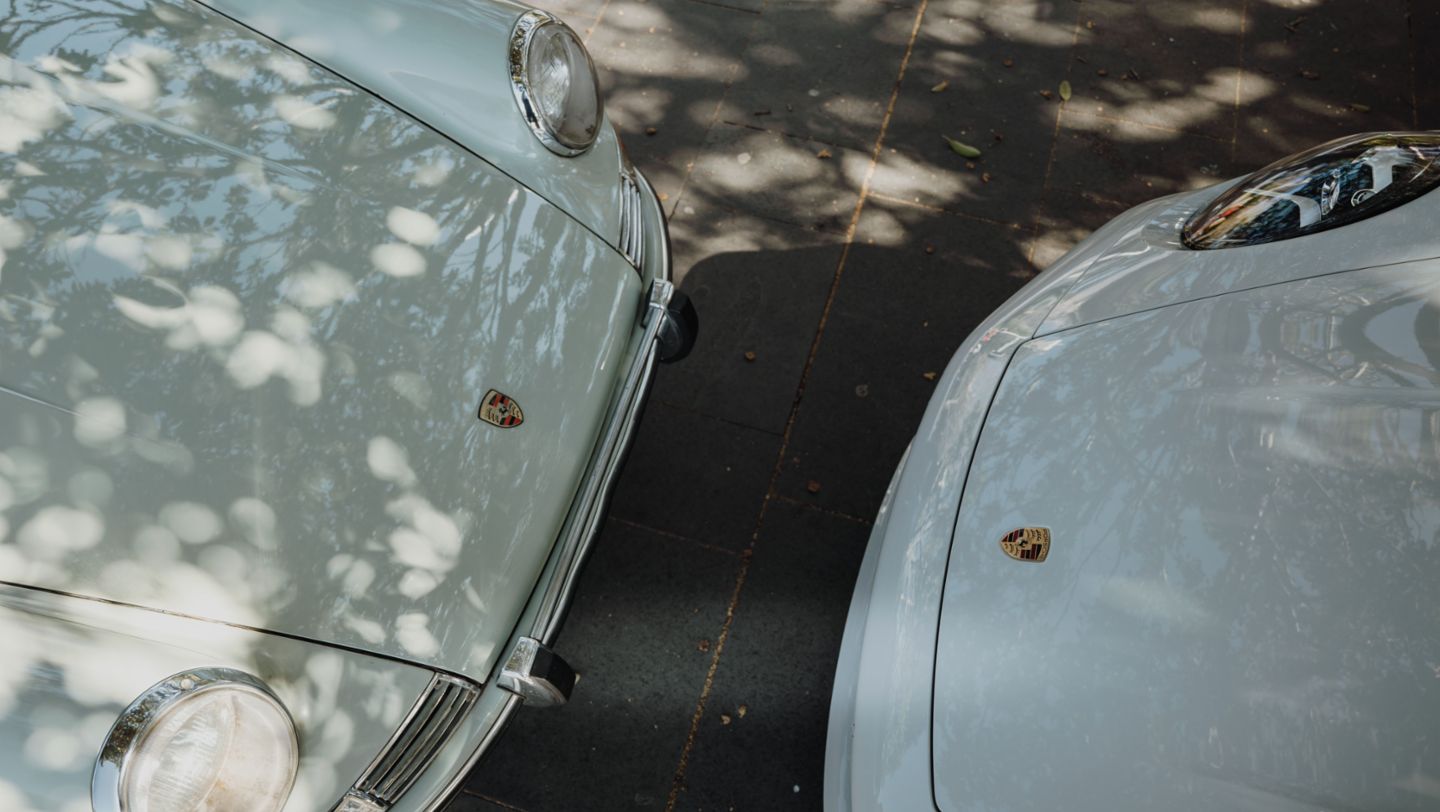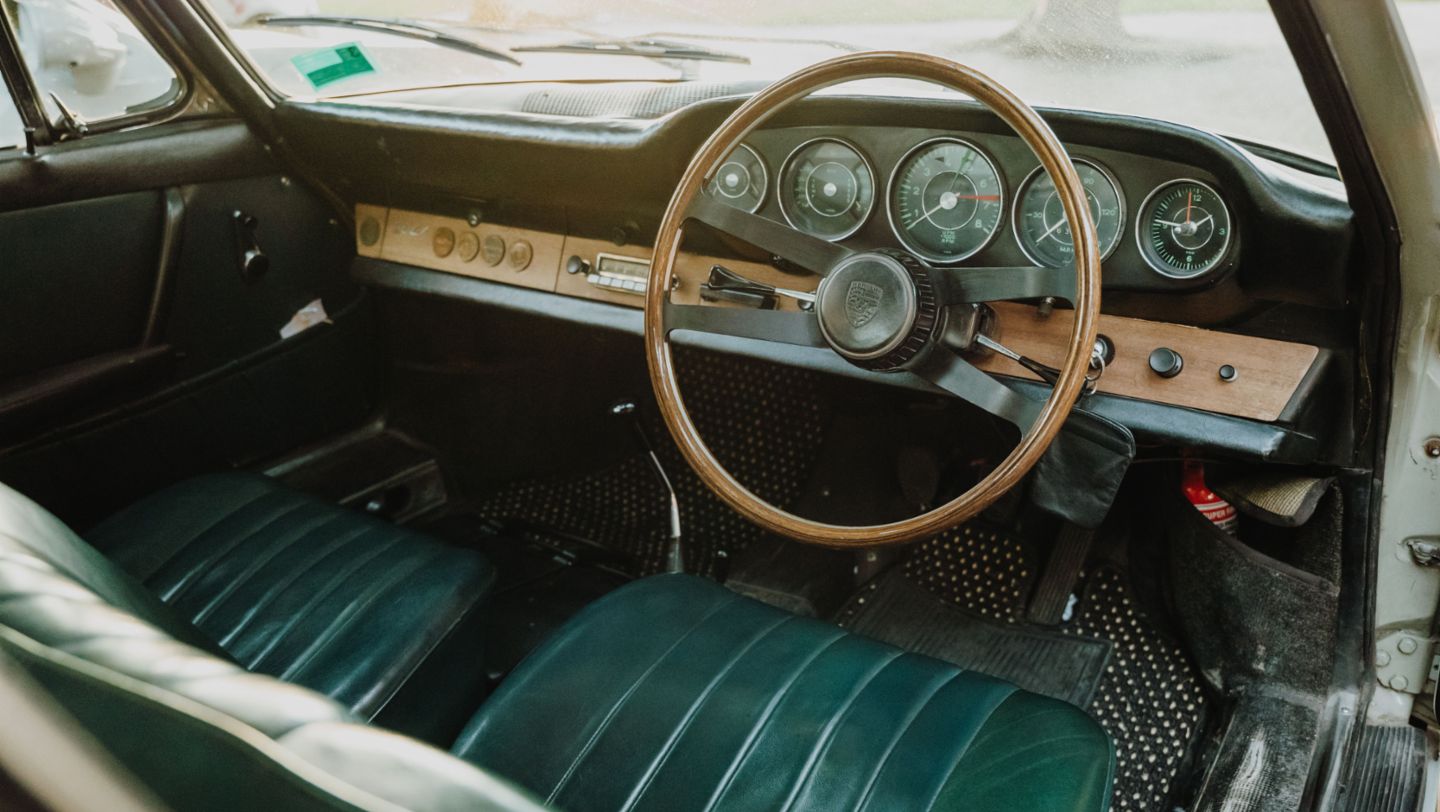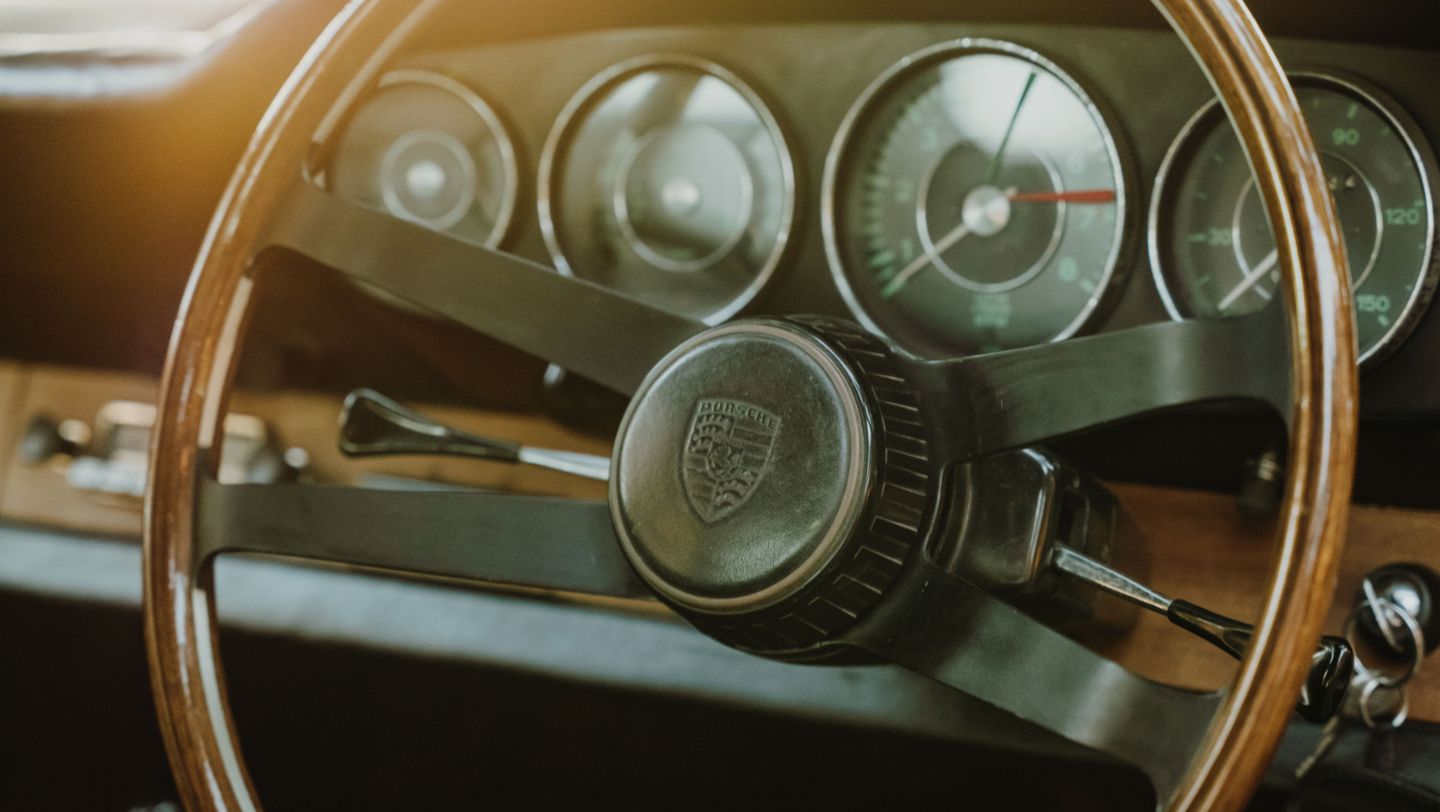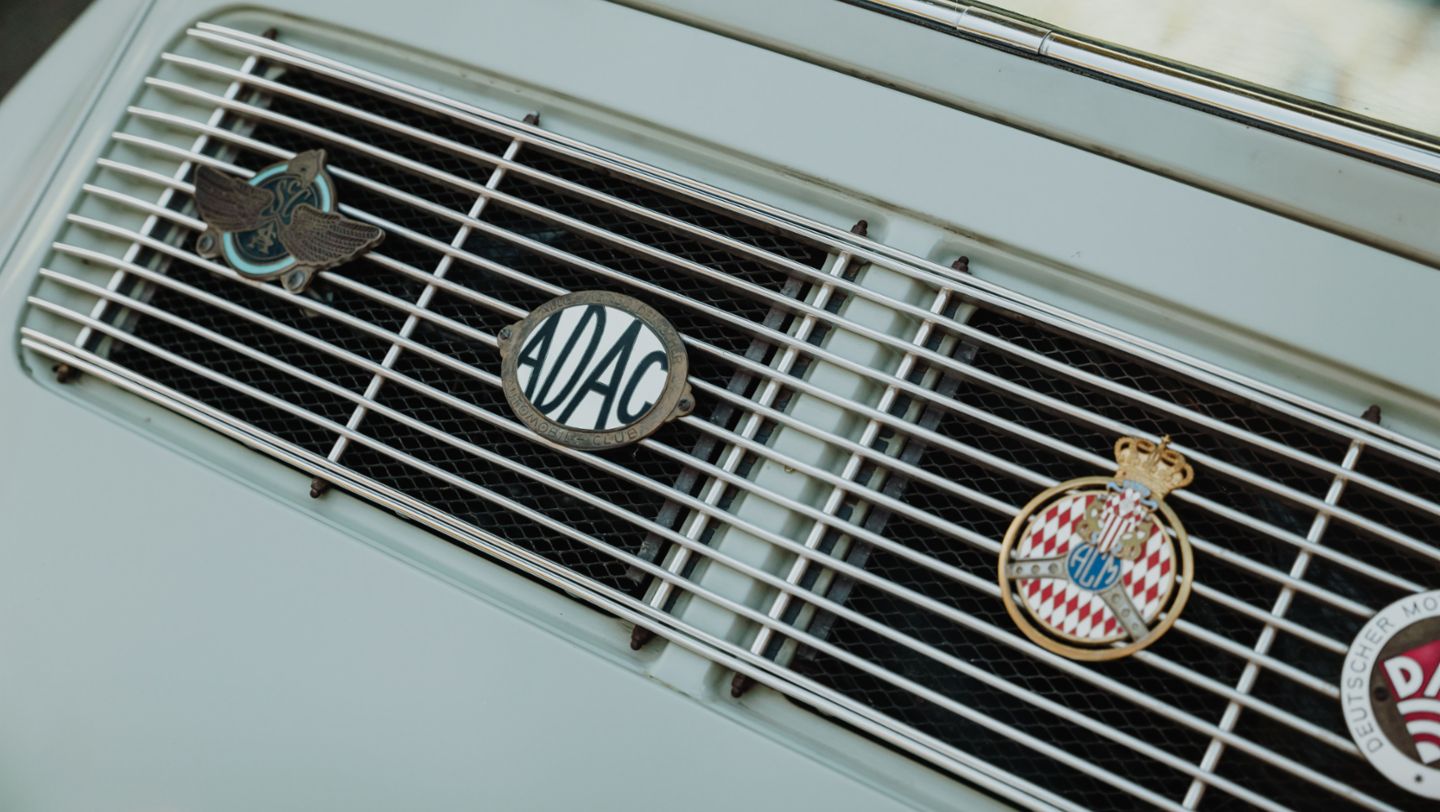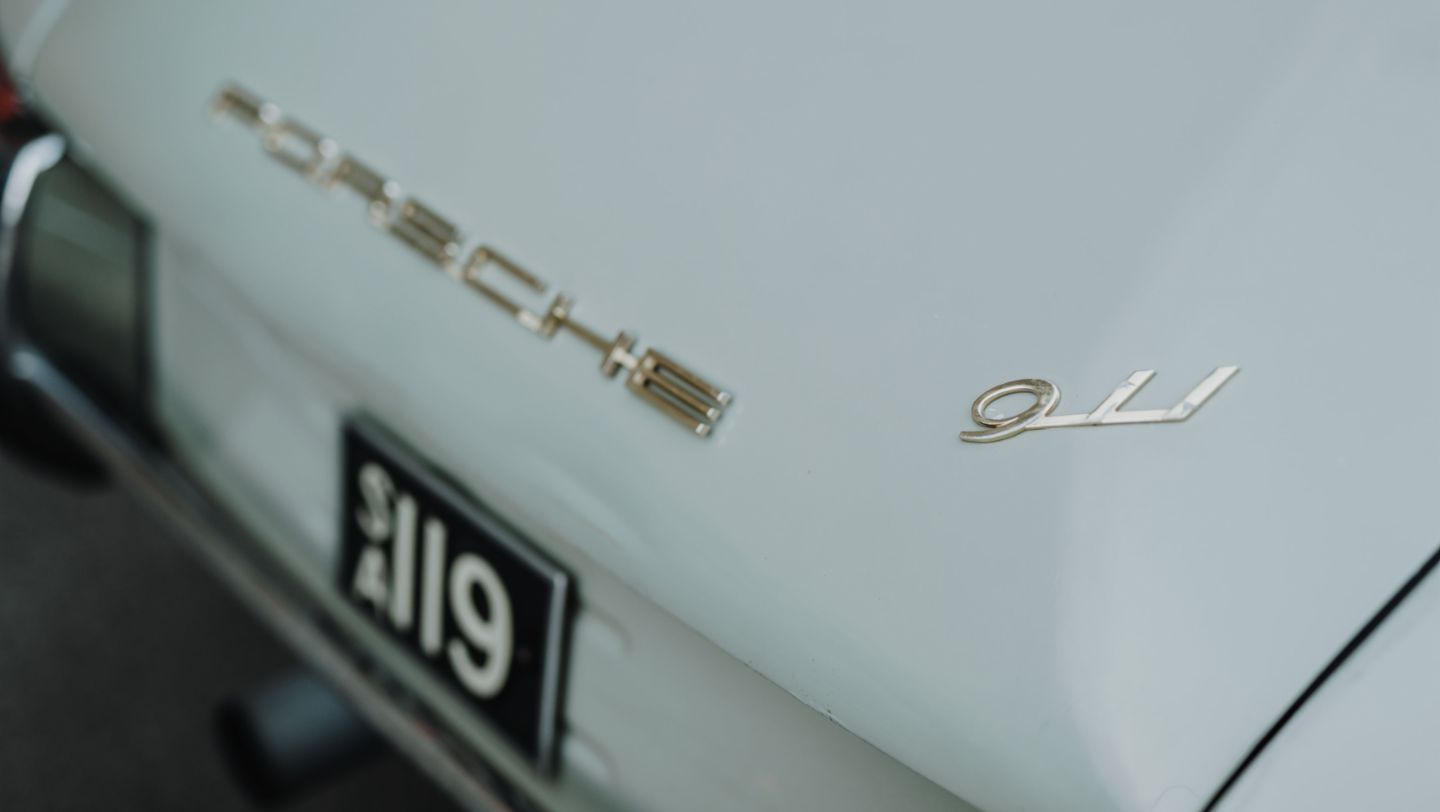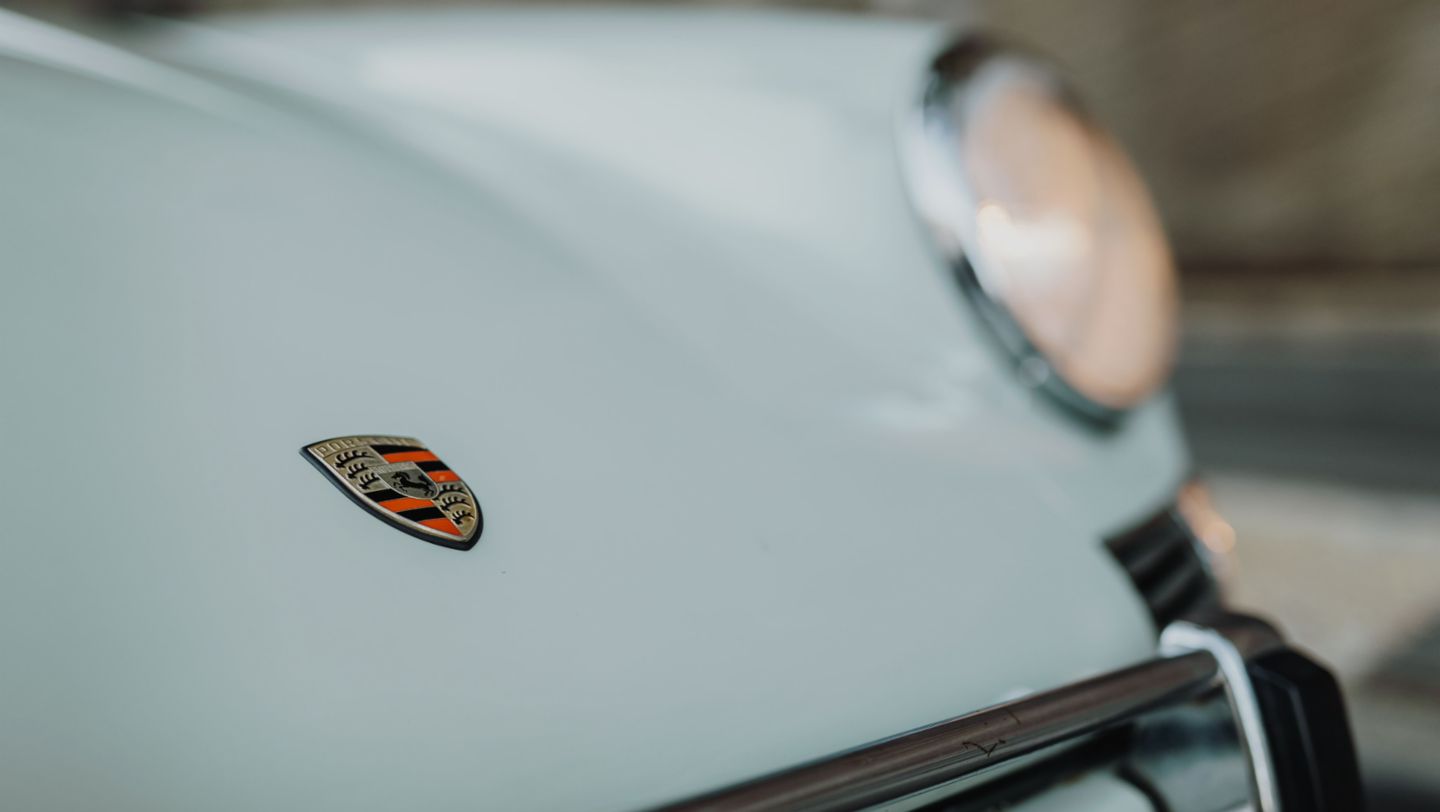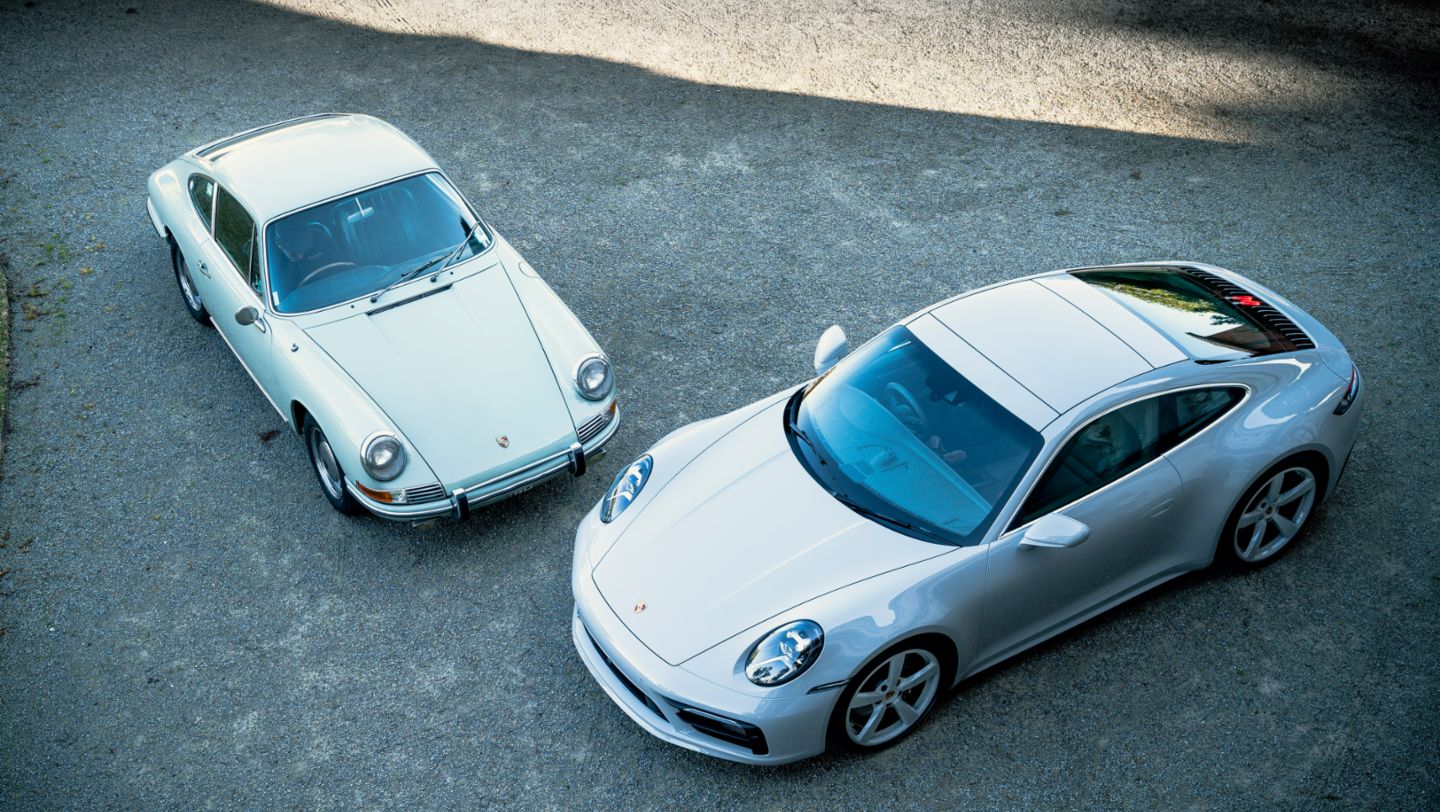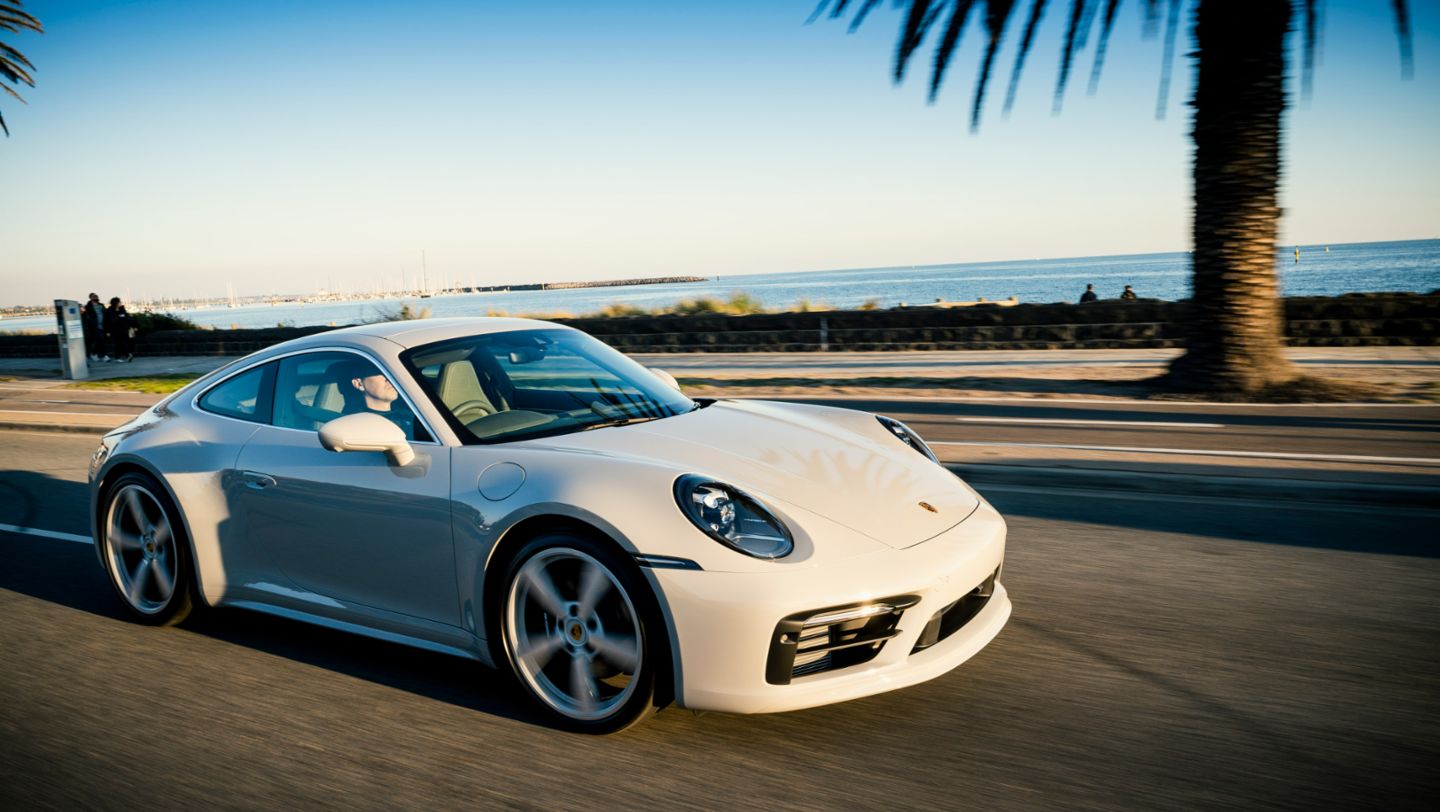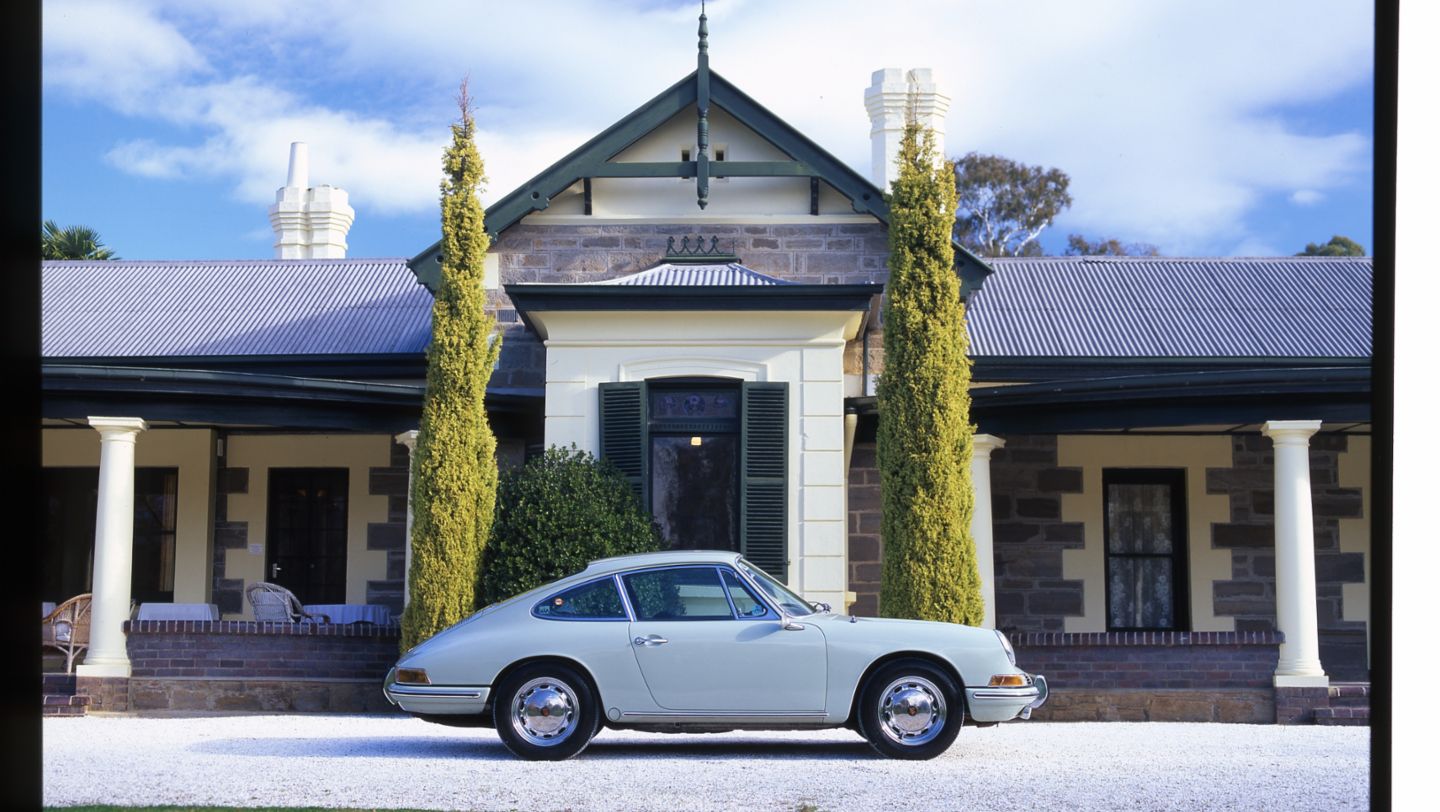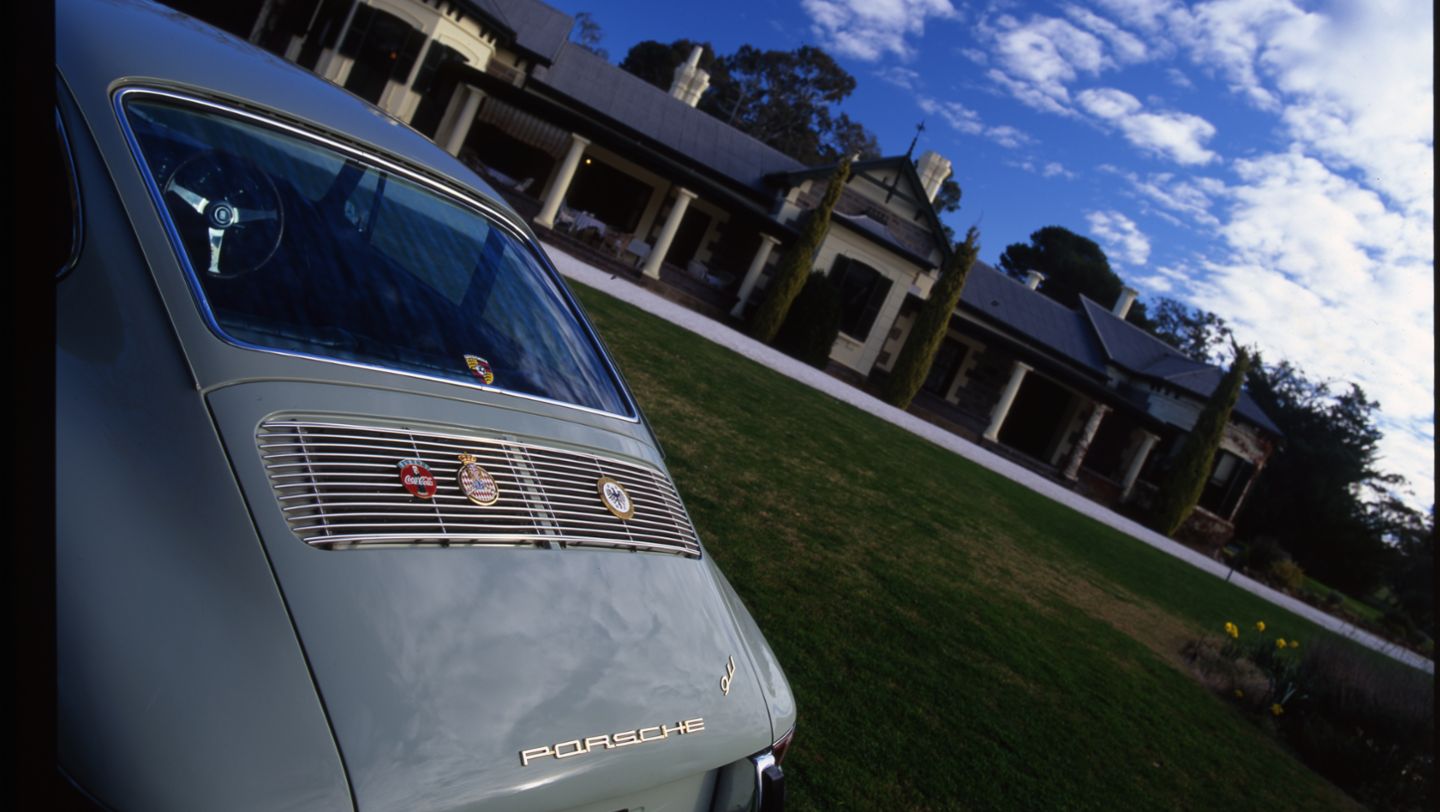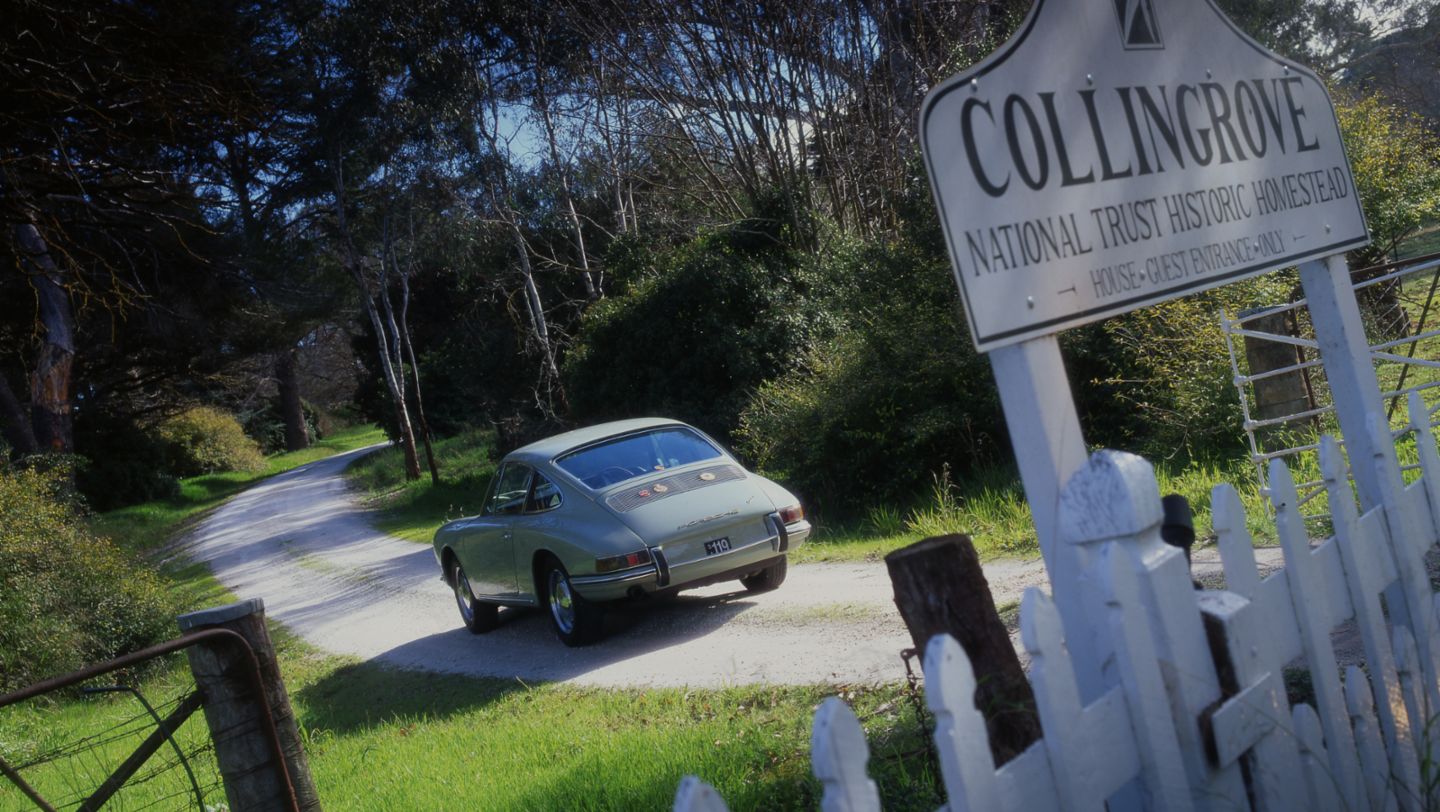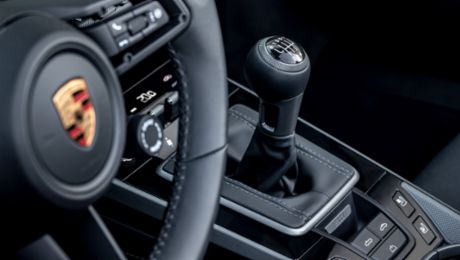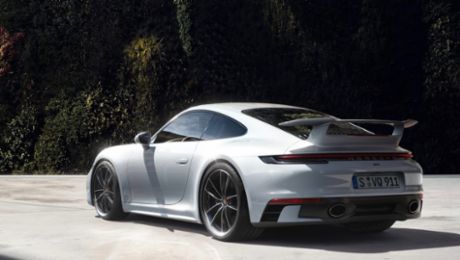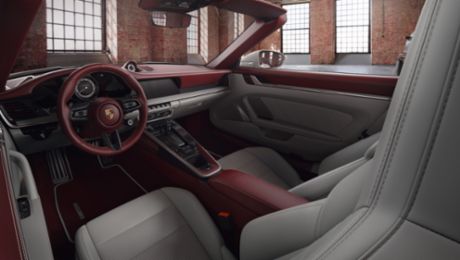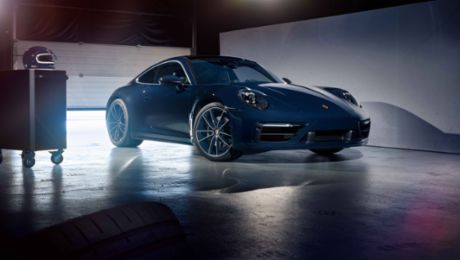The story of the original Australian 911 has inspired a pair of matching Porsche Exclusive Manufaktur 911 Carrera S models. Created jointly by Porsche Centre Melbourne and Porsche Centre Sydney South, the two special editions will go on show over the coming months alongside the first 911 to turn heads Down Under, back in 1965.
“The idea was to take the 1965 911 and reimagine that car and all its wonderful details for 2020,” explains Dean Williams, New Vehicle Sales Manager, Porsche Centre Melbourne.
The original 911 was delivered by the Australian Porsche distributor at the time, Norman Hamilton, to Adelaide farmer Ron Angas in 1964. Even back then, long before the launch of the Porsche Exclusive Manufaktur programme, the car’s specification was something the proud new owner carefully considered.
“It’s incredible that 55 years after the original 911 was delivered to Mr Angas, we can replicate some of the same features in the modern equivalent. It shows just how timeless the 911 is,” says Lee Hallett, General Sales Manager, Porsche Centre Sydney South.
It also reflects the almost endless possibilities for customisation offered by Porsche Exclusive Manufaktur, which combines the highest quality materials with modern production methods and painstaking attention to detail.
Although Ron Angas’s foray into Porsche ownership saw him drive a five-speed manual while the 2020 iterations feature an eight-speed automatic gearbox, the visual details show clearly where the special edition cars descend from.
While the 1965 911 was finished in Stone Grey, the 2020 equivalent from the 992-series colour palette is Crayon, and the two Carrera S models feature matching paintwork on the rear engine cover slats and 20/21 inch Carrera Exclusive Design wheels, which have contrasting black calipers just like the car of 55 years past. Porsche Exclusive Manufaktur SportDesign side skirts, painted exterior mirrors and high-gloss trim strips are among the finishing touches of the present-day colour scheme.
Inside, the early model 911 is swathed in green leather, in beautiful contrast with the car’s standard maple yellow timber dashboard trim and matching wood-rimmed steering wheel, which framed its ‘English’ instrumentation perfectly.
The interiors of the reimagined coupés are finished in Agave Green Club leather with contrasting Crayon stitching and matching Agave Green seat belts. Unlike the original, they benefit from 14-way electric sports seats with memory package and the Porsche crest is embossed on the headrests. Brushed aluminium door sill guards in dark silver are illuminated and personalised with ‘1965 Reimagined‘ text. Both of the type 992 cars have been fitted with an interior package in environmentally-responsible Paldao Dark.
Combining elements of the original heritage with the high-tech capabilities of today, the project set out to capture the spirit of the 992’s ancestor. It has done so with a thoroughly modern twist.
The first 911 Down Under
When Ron Angas put down 2,000 Australian pounds on a new six cylinder Porsche in 1964, the order form stated ‘901’. But by the time the Stone Grey sportscar arrived on Angas’s farm in the Barossa Valley, 100km north of Adelaide, the badge bore the numbers 911, following Porsche’s now famous trademark dispute with Peugeot. The new owner didn’t mind: it meant the distinctive ‘119’ black and white number plate that had been worn by several Angas family cars over the years would neatly mirror the new addition’s model name.
While the car had been fitted with a modified silencer (and subsequently dyno-tested at 134 hp (100kW) – four hp above standard), locals can still recall the stir the 911 caused when it first ventured into the nearby town at the beginning of September 1965. Outside, sealed beam headlights had been fitted to illuminate the backroads of Angaston, where the rasp of the distinctive-sounding air cooled boxer ‘six’ would soon reverberate regularly from Lyndoch to Nuriootpa. The car also boasted coloured Porsche crests on its chromed hub caps.
Angas used to exercise the 911 regularly at the Collingrove hillclimb he had built on his property, where Alan Hamilton – the son of the then Porsche dealer Norman Hamilton – would later claim Porsche’s first National Motor Racing title when he won the Australian Hillclimb Championship in October 1966 in a Bergspyder fitted with the two-litre engine of a six-cylinder Porsche 906. When Angas sold the 911 in February 1969 – to his architect friend Roy Wilson – he had racked up 87,000 kilometres.
The car’s current owner, Adelaide Porsche enthusiast Stewart Kay, first saw it when he interviewed Wilson for a university paper in the late 1980s. Secreted in the shadows of Wilson’s garage, Kay noticed it bore a stark similarity to a car he had read about in an English magazine. On display at the Porsche Museum, he recalled that the car had been cited as the “oldest known 911”.
When he checked the article later, he was surprised to discover that the Museum car’s chassis number was 302 503: exactly 1,000 cars later than the one he had just seen. Calls to the factory via Porsche Cars Australia soon confirmed that the 911 in Wilson’s garage was one of the first right hand drive examples ever built.
He pleaded with Wilson – initially without success – to buy the car, but it wasn’t until 1992 that he received a phone call asking: “Do you still want it?”. A price was negotiated immediately and the car – complete with original keys, original owners’ manual, service books and more than 136,000 km on the clock – found itself its third delighted owner.
In exceptional original condition to this day, Kay still owns the early 911, and while it is usually housed in a museum at The Bend Motorsport Park in Tailem Bend, South Australia, it will go on show alongside its new descendants at Porsche Australia’s two Exclusive Manufaktur partners: Porsche Centre Sydney South and Porsche Centre Melbourne.
